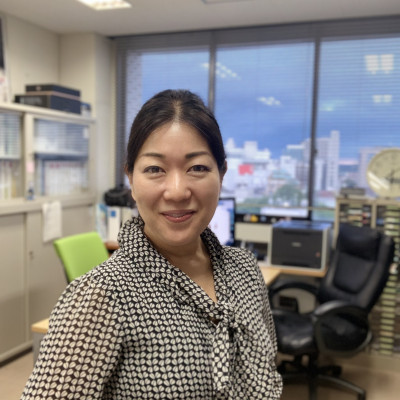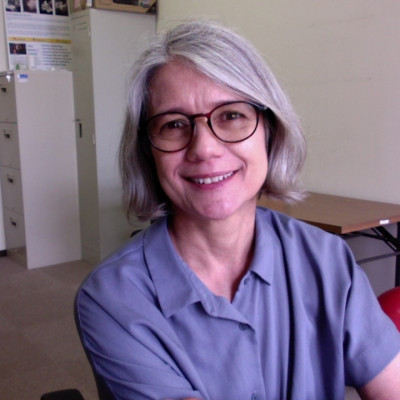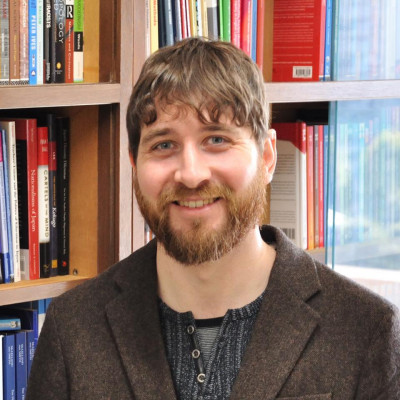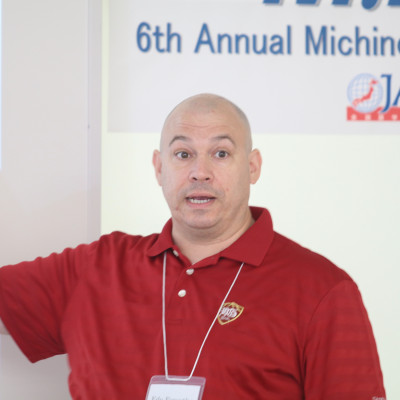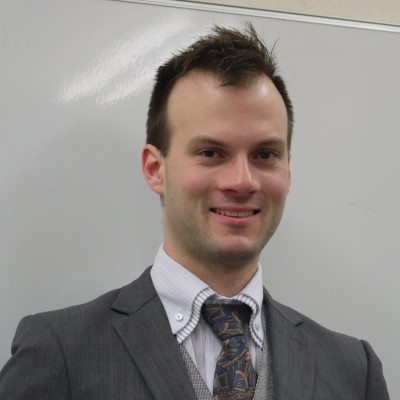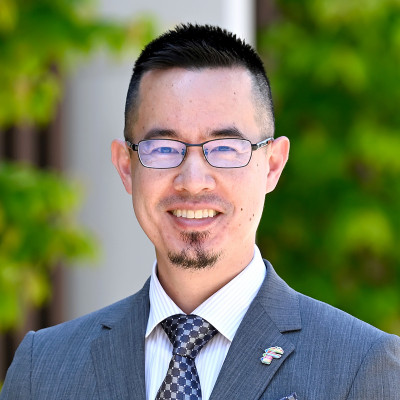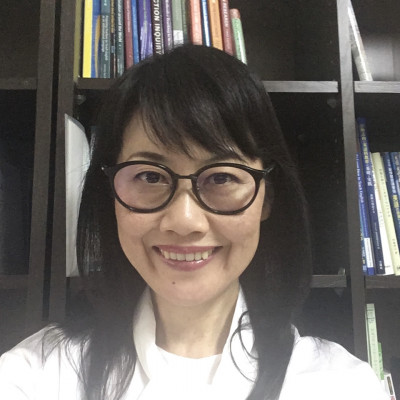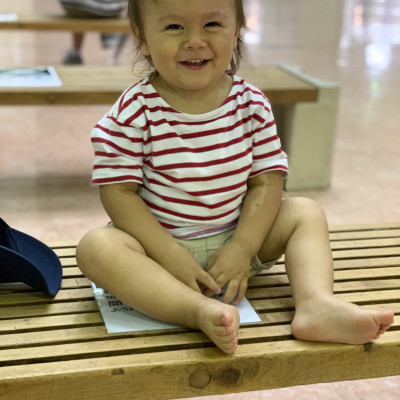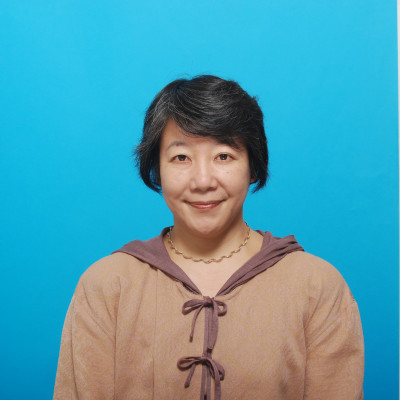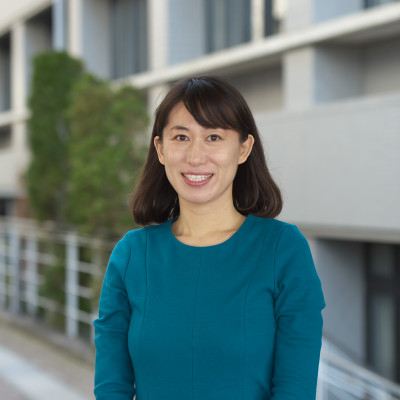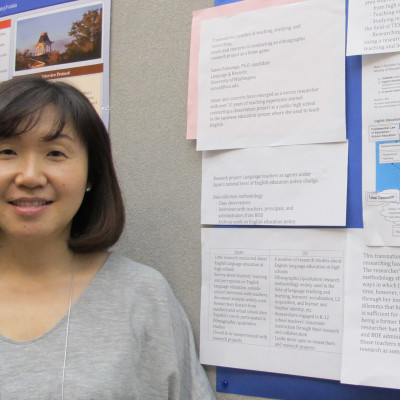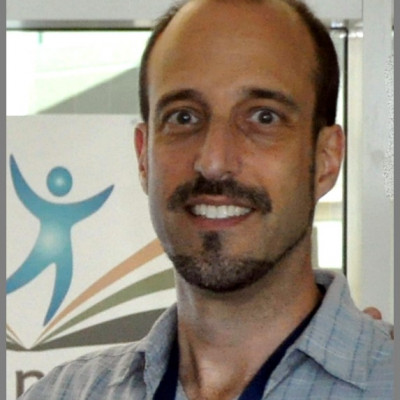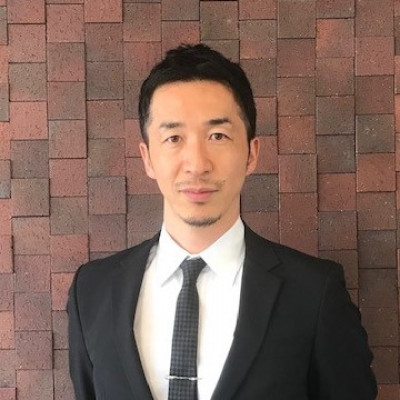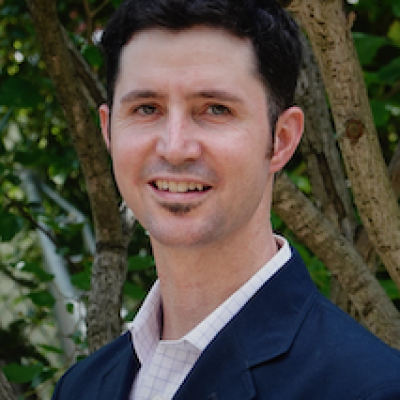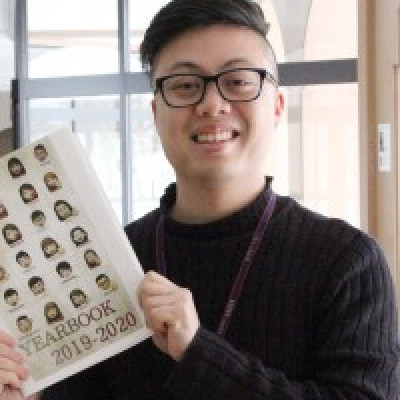Sessions / Research-Oriented Presentation
25 minutes
Ainu Language Learning Through Synchronous and Asynchronous Online Methods #2845
While UNESCO classified the Ainu language as critically endangered in 2009, stakeholders continue to engage in preservation and revival efforts in a variety of capacities. This presentation will focus on an Ainu language class developed in March 2021, amidst the COVID-19 pandemic, adopting a new hybrid style of language learning. The weekly 90-minute class held on Zoom utilizes a long-standing community-based method for adult Māori language learning called Te Ataarangi combined with modern online initiatives. The language teachers and tutors also update self-access revision and study materials weekly on the associated Moodle LMS. The class participants (n=30) include both Ainu and non-Ainu, varying nationalities, young Ainu language and culture apprentices, shopkeepers, school teachers, university professors, university students, museum staff at Upopoy (the Symbolic Space for Ethnic Harmony in Shiraoi, Hokkaido) and other participants dedicated to Ainu language revitalization. The presenters will share the background and methods of the course and highlight the advantages and disadvantages of using Zoom as the main online synchronous learning tool. Functionality of the asynchronous tool, Moodle, will also be detailed, ending with a discussion of future plans for the development of the classes and online platforms.
Using lending history to recommend books for extensive reading #2849
When purchasing new graded readers for a university library, as well as making a varied collection, it is important to consider whether the books will be “popular” or “highly rated” by the students who use the library. The factors that make a book popular may be different for books that are intended to improve English skills. Therefore, using the lending history of books held by a university library, we analyze the factors that make a book popular and derive the criteria for predicting popularity in graded readers. By using these criteria, we can predict the popularity of the books we plan to purchase and so purchase the graded readers most likely to meet the needs of the library’s users. In this study, we use data extracted from an online system which stores the lending history and evaluations of graded readers in a university library, to identify the most popular graded readers and the factors related to their popularity. On the basis of these factors, we estimate an order of priority by performing statistical analysis in order to determine whether the books which the library is planning to purchase will meet the specific needs of the readers who use the library.
Difficulty estimation method for extensive reading of general english books #2848
Extensive reading (ER) entails starting with simple books (graded readers) and gradually expanding the range of reading to include progressively more difficult books. In Japan, ER programmes often make use of “Yomiyasusa Level” (YL), which indicates a book’s difficulty performed by the subjectivity of Japanese people who have already done a lot of ER. One of the principles of ER is that learners should use the YL scale to choose books at an appropriate reading level. Even after learners have progressed from graded readers, they will still benefit from being able to choose books on the basis of YL, but relatively few non-graded readers appear in YL databases. The goal of this research is to estimate the YL of general English books to which a YL has not yet been assigned. This will also be useful for determining the YL scores of new graded readers and for checking the validity of previously assigned YL. First, we examine the parameters which contribute to YL using a corpus tool called Coh-Metrix, which quantitatively evaluates the linguistic characteristics of a text. Then, we perform a regression analysis using these parameters and estimate the YL of general English books.
Comparing the online and paper-based versions of the TOEIC L&R #2893
Shōzan University (a pseudonym) uses the Computerized Assessment System for English Communication (CASEC) for placement. Students complete the CASEC at home in late March, then the TOEIC Listening & Reading (L&R) a few weeks later once classes have begun. Two cohorts, 2018 and 2019, completed a paper-based version of the TOEIC L&R; however, two cohorts, 2020 and 2021, completed a novel online version of the TOEIC L&R, which reportedly results in similar scores as the conventional paper-based TOEIC L&R (IIBC, 2020). Author (2020) revealed that all cohorts had similar CASEC scores; however, TOEIC L&R scores from the online version were significantly higher than from the paper-based test. Author (2020) also reported on a sub-group (n = 57) who completed both versions of the TOEIC L&R, with online test scores being significantly higher than the conventional paper-based scores. However, the former was completed without proctors. The current presentation will report on a study from February 2022. Participants (n = 80) will complete the two different versions of the TOEIC L&R with participants randomly assigned to two groups (i.e., paper-online or online-paper). Both groups will complete both tests under supervision.
Automatic question generation for an extensive reading placement test #2850
When practiced correctly, Extensive Reading (ER) should enable learners to become more proficient users of a foreign language. The method is only effective, however, if learners read books of an appropriate level, i.e. books which they can enjoy reading without needing to consult a dictionary. Therefore, the Extensive Reading Foundation Placement Test (ERFPT) was developed to measure the reading level of learners. The test employs comprehension questions which have been created by teachers who have volunteered their time to help develop the test. More texts and test items will improve the test; therefore, we propose a system that automatically generates questions and so reduces the burden on those making the test items. The question generation method is based on the way that the test item maker actually creates questions for the ERFPT, in other words through a process of ‘abstraction’. We use a summary created by PEGASAS, which is a transformer model for abstractive text summarization. This presentation will investigate the suitability of this method for generating questions for ERFPT. If successful this method may be used for creation of a variety of comprehension tests beyond ER.
Developing an in-house corpus and high-frequency word list for science majors #2854
This reports on a work-in-progress of the development of an in-house corpus and high-frequency word list of the corpus for a Science and Engineering university in Japan. Students read scientific articles as part of their required English courses. However, in an informal survey, while some students were positive about the prospects of reading specialized academic articles in English, others felt that it would be too challenging. In order to bridge the difficulty gap, an in-house corpus of articles recommended by the science faculty and a high-frequency word list of the corpus are being developed. Interviews and surveys will be conducted with selected members of the science department to understand the nature of articles written in English that these members would recommend for graduate students. The articles will be gathered to create a corpus of one million words, and processed for high-frequency words using AntConc (Version 4.0.2) (Anthony, 2021) a free online vocabulary profiling software. These will be compared against the new academic word list and further analysed for specialized words. The findings will help to construct an informative vocabulary list for the students in graduate school, and in the future, this could be further refined for undergraduate students.
The Teaching of LOTE in a Japanese High School #2827
In Japan, English is the dominant foreign language taught in classrooms and a limited number of high schools provide languages other than English (LOTE) (MEXT, 1996, Okabe, 2002). However, teaching LOTE is said to be beneficial for developing open-minded behavior towards those of different cultures and backgrounds, and improving metalinguistic competence such as expressing oneself and understanding others (Psychol, 1999).
The target organization hosts a program called “Languages of the World” in a newly established high school, which focuses on LOTE. In this course, all first-year students learn five languages: Chinese, Korean, French, German, and Spanish, each taking eight class hours. Not only do the syllabus and materials used in this program focus on language knowledge, such as grammar and pronunciation, they also touches on the cultures of the areas where the languages are spoken. While there were challenges, such as a lack of familiarity with LOTE, and much to be improved in this first-time program, the initiative had several meaningful and productive outcomes for the students. A survey sent out to students after the completion of the school year revealed that many experienced personal growth in cultural understanding.
Teacher Trainees' Opinions of the Viability of TBLT in Japanese High School #2841
This action research study focused on teacher trainees and their beliefs about the potential of TBLT in their future teaching situations. The participants were fourth-year undergraduate students enrolled in the Teacher Education Program at a private university in Japan. As part of their seminar work, the students read a series of articles describing the process of implementing TBLT. They also read articles describing relevant research studies focusing on TBLT. After seven weeks of lessons with each lesson focusing on a different article, the teacher trainees participated in a TBLT lesson as students. Their assignment for this portion of the seminar was to share their thoughts, specifically TBLT’s viability for their future teaching context. The data were collected through the use of a questionnaire with open-ended questions. Each question represents a research question for this study. The research questions elicited the teacher trainees’ opinions on the following issues: TBLT’s viability within the Japanese context; TBLT’s viability for low-level learners; weaknesses and strengths of TBLT; possible approaches for incorporating TBLT into English classes; TBLT and student motivation; and whether they plan to use TBLT in the future. The results indicated the trainees were mostly concerned with TBLT’s viability for low level learners.
Setting up a successful COIL project #2858
Collaborative Online International Learning (COIL) partnerships provide faculty members with opportunities to collaborate with colleagues at institutions in different countries, and allow students to learn in a globally networked classroom in the form of virtual mobility. A COIL project begins with finding a teaching partner at a university in another country, and then together developing a six- to-eight week learning experience for both their classes in which all students learn, exchange, and interact with each other without ever leaving their own country. The thought of developing and embedding a successful international online learning experience with students and the professors themselves at different institutions may sound exciting, but it can also be very overwhelming. With so many variables at play - technological access, language differences, time zones, and cultural and pedagogical differences - faculty may not know where or how to begin. The two presenters, professors from Canada and Japan, will share about their experience collaborating on a COIL project for their students, who were in different majors and had different levels of English. Topics will include initiating a partnership, setting feasible goals and objectives together, and troubleshooting when best-laid plans do not always work out.
Language Learning COILs: A Pilot Study #2865
Collaborative Online International Learning (COIL) and Language Learning COILs (LLCs) provide opportunities for students to communicate with students from other countries learning the same L2, to communicate with native speakers of the L2, and to develop cultural awareness and understanding. The COVID-19 pandemic has hastened awareness and understanding of how important and useful COIL might be in education. This presentation will report on the outcomes of a LLC held in the fall of 2021 between a English Communication class for first year Japanese university students and a 2nd year Japanese language class at a college in the United States. After a brief outline of the LLC’s content and procedure, I will review the results of a post-LCC questionnaire given to the Japanese students. Results of this pilot study show that students had positive responses to the LCC, and indicated increases in motivation to study abroad, awareness of cultural differences between Japanese and American university students, and participation in regular English classes. The data related to perceived language ability and confidence in using the language is inconclusive and merits further investigation. This presentation might be of interest to any instructor interested in Language Learning COILs.
Exploring systematicity of spatial phrasal verb constructions for L2 learners of English #2874
This ongoing study investigates the systematicity and teachability of difficult spatial phrasal verb constructions (PVCs) for second language (L2) learners of English. Cognitive semantic research (e.g., Evans & Tyler, 2005; Mahpeykar, 2014; Shintani, Mori & Ohmori, 2016; Bong, 2019; Tyler, Jan, Mahpeykar, & Tullock, 2020) indicates that systematicity and teachability of PVCs have been a long-term focus of language teachers and applied linguistics, and continues to be of particular interest. For this current study, 41 1st-year university students in an English program in Japan completed a survey eliciting a range of difficult PVC usages. Analysis of the data reveals that correlations of participants’ first language (L1), linguistic complexity, PVC difficulty, prototypical and polysemous categorical properties demonstrate systematic features that can influence the teachability of English PVCs for L2 learners of English. The implications of this research on the systematicity of spatial PVCs could lead to enhanced teachability and thus may have an effect on L2 pedagogical practices.
A quantitative exploration of teacher demotivation in eikaiwa #2879
Teacher demotivation negatively affects the well-being of educators and can increase teacher burnout and turnover intention. Factors contributing to teacher demotivation include a lack of autonomy, interpersonal difficulties in the workplace, inadequate training, and few chances for career progression. In the eikaiwa context, few studies have directly explored teacher demotivation. Taylor (2017, 2019) qualitatively demonstrated demotivation among teachers from both large eikaiwa chains and independent schools alike, yet the depth and scope of the phenomenon within the industry remains unclear. In order to fill this gap, a 32-item Likert scale questionnaire exploring autonomy, training, career progression, interpersonal relationships with colleagues and managers, and turnover intention was developed and distributed online between December 2021 and February 2022. Results from 89 respondents were collected and analyzed. It was found that teachers were most demotivated by limited career progression, lack of training opportunities, and reduced autonomy. They were least demotivated by interpersonal relationships with colleagues. The presenter will consider these results in relation to demographic factors such as gender and school type. Implications for eikaiwa educators will also be discussed.
Perspectives on how to support learners with special educational needs #2710
While accommodation for students with special educational needs (SEN) is built into mainstream education and teacher training courses, and considerable research has been carried out regarding SEN students' language learning, much less attention is given to the professional development of language teachers who seek to provide inclusive and adaptive learning environments for SEN students. This presentation reports on a case study carried out among five instructors who taught students with SEN in an academic discussion course at a Japanese university. These teachers were considered representative of university-level language teaching practitioners in terms of qualifications, experience, and teacher education, including a lack of official training regarding working with SEN learners. The study used reflexive writing by the teachers to uncover a set of developing perspectives on, and diverse approaches to, supporting SEN students. The results reveal two areas that are potentially instructive for both teachers and academic managers of professional development programs. First, they give some insight into the extent to which pre-service training programs are currently preparing teachers to help learners with special educational needs. Second, they outline a variety of ways in which teachers can proactively adjust their practice in order to better create equitable and inclusive classrooms.
The Unheard Voice in Materials Development #2971
The learning materials or textbook used in the classroom is a core component of language learning in the EFL industry. However, the material is often designed by teams of materials writers, located far away and completely faceless from the students' perspective. Additionally, multiple researchers in the field (McGrath, 2013; Tomlinson and Masuhara, 2018) have identified one pitfall of materials development and textbooks as the lack of a meaningful feedback loop from learners, what we refer to as ‘the unheard voice.’ This presentation will report on a survey carried out by the presenters to give students a voice by listening to their attitudes towards the materials used in class. Some of the main areas covered include the level of interest or enjoyment towards the current textbooks/materials used in class, problems that they perceive in current materials, the type of materials that students would like to use, the preferred modality of learning material delivery (such as traditional pen and paper, group work, video, and online quizzes). In addition, the survey went deeper by encouraging students to think more critically by asking them to consider designing their own materials and the content and format of these materials.
Exploring the benefits and challenges of using humor in online teaching #2735
Humor can be a vital component of the language teacher’s repertoire, especially considering its positive impact on classroom atmosphere and student participation (Reddington & Waring, 2015). Unfortunately, instructors had to drastically rethink their approach to incorporating humor with the sudden shift to online instruction. Would students still appreciate or even recognize humor use with lessons being taught via online video conferencing?
In order to gain a better understanding of the role of humor in synchronous online teaching, the presenters undertook a mixed methods study, administering a survey to university English language teachers (N = 60) and conducting follow-up interviews with select participants. The Likert-scale items in the survey covered variables such as the benefits, challenges, and approaches to using humor in online teaching. Additionally, open-ended survey items queried teachers about topics such as comparing the use of humor in online and F2F lessons and solutions to the limitations of online teaching. Responses indicate vast differences in opinion, with some participants lamenting the obstacles to incorporating humor into their lessons while others enthused over the unexpected possibilities offered by the novelty of this new teaching environment.
After reviewing the survey results, the presenters will share expanded insights from the follow-up interviews.
High-frequency multi-word sequences and learners’ speech rate and listening #2830
The automation of multi-word sequences (MWSs) reduces the cognitive load required for fluent speech (Wood, 2010). However, this poses challenges for L2 learners because considerable phonological reduction occurs in high-frequency MWSs (Bybee, 2002). This study looks at whether attending to reductions during focused listening and speaking practice of the highest-frequency MWSs could help improve students’ spoken fluency and listening perception (accuracy). Over the course of 10 weeks, both a control group (N=17) and an experimental group (N=16) of Japanese L1 English language users studied 10 common bigram collocations each week, while the experimental group additionally studied sets of 10 phonologically reduced high-frequency trigrams. Both groups also described three picture stories that contained the target collocations in class and completed focused listening homework each week. Participants were tested for 1) gains in spoken fluency through both a free speaking and storytelling task and 2) ability to accurately complete a dictation listening task containing target MWSs. This presentation will discuss the study and results, which found a large advantage for the experimental group in spoken storytelling fluency but no statistically significant difference in free speaking fluency and listening perception.
Cooperative board games for developing turn-taking in EFL discussions #2835
Effective turn-taking is vital for successful participation in group discussions. In Japanese EFL contexts, group discussion often exhibits turn-taking behavior that is markedly different from that of competent English speakers, often limited to each participant making a short speech and brief comments of agreement or disagreement. Turn-taking behavior is also a major component of the interaction in cooperative board games, which encourage group decision-making and often exhibit more varied forms of turn-taking. This presentation describes the use of cooperative board gameplay in the classroom as a training aid to develop learners' turn-taking skills. First, the presenter will explain the characteristics of cooperative board games from a TBLT perspective, including the range of speech acts contained within their gameplay. Then an analysis of student transcripts collected over one semester will be presented to illustrate changes in student turn-taking behavior in a variety of contexts. The changes explored include differences in turn lengths, speech act use, and turn-taking patterns of learners. The presentation will conclude with some suggestions for using cooperative board games in the language classroom to maximize language use.
Teacher Perceptions of ADHD and ASD in the Japanese EFL Classroom #2698
Autism spectrum disorder (ASD) and attention-deficit/hyperactivity disorder (ADHD) are two frequently diagnosed learning differences which can seriously influence students’ L2 development. Although Japan has diagnosis rates comparable to other developed countries (NISE, 2016), teachers often lack training for these conditions. This is particularly true for EFL instructors, who are not necessarily trained or informed of learning differences. In Japan, reporting and communication of these conditions is generally scarce, yet MEXT maintains a policy of inclusion at all levels of education. Therefore, a clearer picture of the challenges facing EFL teachers is one step toward ensuring classroom praxis can meet the promise of inclusivity. A survey of EFL teachers in Japan was conducted to better understand issues around learning differences as ADHD and ASD in their classroom. The survey had three goals: to chart themes in EFL teachers’ perceptions of learners with ADHD and ASD; to chart adequacy of EFL teachers’ knowledge and training for learning differences; and to identify potential areas of need for better understanding how to make the EFL classroom more accessible. This presentation will present the results of the survey and a set of practical takeaways which EFL teachers might consider in furnishing accessibility in the classroom.
Further Reflections on the Effects of Free Writing in an EFL Writing Class #2724
Japanese university students are often required to perform free writing activities in their English language classes in an attempt to encourage confidence in writing in English. Free writing activities are defined as “the act of writing quickly for a set time from ten to fifteen minutes, just putting down whatever is in the mind, without pausing and worrying about what words to use, and without going back to modify what has been written” (Li, 2007, p. 42). The authors have had their students do free writing activities throughout two years of English composition courses and analyzed the quantitative effects of such activities. In this presentation, the authors will explain the free writing activity tasks used, then provide quantitative data to show results in terms of the number of words written, and finally representative qualitative examples from the students’ reflection on their free writing experiences. This presentation will be an extension of the data presented at JALT2021. Attendees will come away with ideas for how to more effectively employ free writing in their university English language classes in a manner that will align with students’ ideas on free writing for self-improvement.
Masks’ impact on listening communication in the L2 context #2736
Since the start of the COVID-19 pandemic, the wearing of face masks during all interpersonal contact has become our “new normal.” Though an indispensable part of our daily outings, it is indisputable that masks impede verbal communication by both muffling speech sounds and blocking visual cues (e.g., facial expressions, emotional information) from view. While this impediment might only be minor for people conversing in their first language, the current study sought to investigate the impact that masked speech had on language learners’ comprehension of a second language. A sample of 192 Japanese university students were given a listening task under three conditions: masked speaker, unmasked speaker, and audio only. Results indicated that learners had significantly more difficulty comprehending the speech when viewing a masked speaker, even more so than when they were just listening to voice recording (i.e., with no accompanying picture). We will discuss with attendees current theories of speech perception and listening comprehension which may explain these findings, as well as ideas on how to counteract this effect to communicate more effectively in the classroom while masked.
CLIL and Translanguaging in EAP classrooms #2836
A class of 3rd year Japanese university EFL students (n=26) were taught a subject called “Science and Society in English” that allowed them to utilize their prior knowledge from their majors in the EFL classroom. A CLIL-based syllabus incorporating translanguaging approaches was created to support students' use of L1 and L2 materials. Themes explored in the class covered the impact of science and technology on society, and its benefits/ hindrances . Following "Bloom's Revised Taxonomy 2001" as a learning progression guide, students were provided with opportunities to read and discuss topics related to their Science and Technology majors in their L1 and L2 to prepare to write a research paper and make a final presentation in English. This presentation will outline how Blooms Revised Taxonomy, CLIL and translanguaging approaches were incorporated in the classroom throughout the 15 week semester. It will outline the observed benefits to students’ comprehension of content and the specific language it requires through bringing their prior knowledge from their majors to the forefront. Findings indicated that allowing learners L1 in the L2 classroom increased students' levels of motivation and willingness to communicate, while developing their academic writing and presentation skills.
Using Technology to Teach English Communication for Repeaters #2837
Eight students (n=8) attending a required course called English Communication at one university in Japan were taught during fall AY2020 (i.e., from September 2020) after the instructor reviewed literature from January 2017 to August 2020 on teaching EFL learners who are repeating their courses. When class began in September, the instructor started teaching 15 sessions on Zoom with each session consisting of two 90-minute sessions on Zoom, and took notes after class based on class observation after each session. Based on a synthesis of literature review and notes based on observation, it became evident that (1) a semester-long twice a week 90-minute course based on having students make answers based on open-ended questions can elicit increasingly complex responses from students whose TOEIC scores range from 295 to 345 points in the target language; and (2) having students submit reflections at the end of each class can enable teachers to understand difficulties students are facing with developing their linguistic skills and encourage students to reflect on themselves for personal development. Details of literature review, open-ended questions, and notes based on observation will be presented to help the audience think about ideas that can be applied to their own classes.
Imagining anti-oppressive GCE EFL teaching theory & practice #2861
This presentation introduces the theorizations and specific anti-oppressive classroom practices developed in the 1st year of a 3-year Japanese-government funded project. The specific theory of anti-oppressive education introduced was developed by combining anti-oppressive theory and global citizenship education (GCE) theory for EFL classroom contexts in Japan. To build the theory, Andreotti’s (2011) theorizations are combined with terminology from Sensoy and DiAngelo (2017) to explain an anti-oppressive theory and practice, which not only uncovers the complexities and fluidity of societies, but also uncovers the systemic oppression that organizes them. Foundational terminology is explained to understand systemic oppression and constitutive subjectivities (Coloma, 2008), and this theory is used to explain several anti-oppressive teaching practices which promote self-reflexivity and go beyond inclusion. Anti-oppression teaching methods are shared, drawing on personal experiences in pre-service education. As a teacher-educator, the presenter explains the important task of teaching not only content, but also the realities of complex local and global social justice issues that impact the students’ future teaching careers. In this new COVID-19 era where injustices are magnified, these anti-oppressive practices encourage educators to go back to the basics to understand their role in systemic oppression, as well as their role in dismantling it.
Nurturing identity of empathy in a linguistically responsive course #2965
In an effort to develop disciplinary literacies students in tertiary-level learning contexts, there have been various pedagogical approaches to fostering the learning of both language and content (Marsh, 2002; Zappa-Hollman, 2018). One widely-accepted approach is content-and-language-integrated-learning (CLIL), pointing to the importance of nurturing discipline-specific literacies of students as apprentice scholars who can appropriately participate in the scholarly conversations and practices of a discipline (Airey, 2011). Further classroom-based research insights are needed to deepen our understanding of whether and how CLIL-based approach can contribute to students’ empowered identities as legitimate participants in academia. This presentation explores a coordinated project-based pedagogical effort by university educators in Canada aiming to develop the disciplinary literacies of international undergraduate students in a linguistically-responsive course. The presenter will draw on specific examples of how such a pedagogical effort informed by task-based, functional approaches to language learning may create an educational space cultivating empowered identities of students. The presentation will illustrate how students were invited to position themselves and others as producers of meaning with a sense of affective, cognitive, and communicative empathy while exploring the inextricable relationship between language and disciplinary knowledge. The presentation closes with pedagogical insights into the importance of empathy-fostering classroom discourse.
Critical co-presenterships: Podcasting as reflective practice #2970
In 2014, the presenters began an independently-produced podcast featuring discussions about various aspects of language education. Although the initial goal of this project was to explore the format while talking about areas of mutual interest, an appreciation began to grow of how collaborative dialogue, in which interaction leads to a co-construction of new ideas and perspectives, can contribute to professional development. To capture this dynamic, the concept of the critical co-presentership was developed – a version of the well-established reflective practice of a critical friendship, but one that takes place within a recorded and publicly available format. This presentation reports on research conducted to explore the concept of the critical co-presentership through a process of duoethnographic reflection, in which two participants juxtapose their respective life histories in order to provide complex and nuanced perspectives on a particular phenomenon. This research led to a deeper conceptualisation of the critical co-presentership, which revealed broader implications for language teacher development. Results suggest that a discussion format that includes a time limit and awareness of a listening audience can assist the participants in defining concepts, connecting individual perspectives with universal themes, and engaging in critical discussion of classroom practice.
Understanding the Process of Generating Text in Academic Writing - A Student Case Study #2742
Mastering academic writing is one of the biggest challenges for tertiary level students. Whilst classroom instruction may provide guidance in how to properly construct an essay or research paper, the actual process of writing is one that many students find disorientating. Likewise, once submitted, educators are often left bewildered as to how their teachings so comprehensively failed to be translated into a competent piece of writing. The problem for both parties is that in many cases the most significant moment of the writing process is one the students have received no direction on -- how to actually move between ideas and text generation. Collins and Gentner (1980) claimed it was important to separate idea production from text production with the key component focussed on identifying movement between the ‘content space’ and the ‘rhetorical space’. This applies at both a sentence-construction and paragraph-assembly level. Through the use of Think Aloud Protocols, this presentation will look at how a freshman student navigates moving between her ideas and converting that into text and what writing instructors can learn from this crucial moment of the writing process.
EnglishCentral: Moving Beyond from an EdTech Tool to your Personal Virtual Assistant #3288
This presentation is focused on new features, improvements and the future EnglishCentral is heading into, on how it would stimulate further and keep the users engaging with the software tool, while also keeping up with the rapid evolution of technology. The factors that formulated the changes, enhancements and future plans are based on the accumulation of various study-pattern data and feedback from schools and companies that have been regularly using EnglishCentral. Most of the details and information gathered were on increasing or improving the speaking-related features. Better scoring, more about what is spoken in an intelligible English language, and allowing to provide one’s viewpoint on a topic with an assessment through AI or from actual professionals teaching English. Consideration of users’ comments and feedback relating to EnglishCentral has helped build and improve the software tool based on their needs and wants, making sure their learning experience of the English language is productive and effective.
Comparing Zoom and VR lessons in Language Education #2833
A comparative study was carried out from April 2021 to January 2022 to determine the effectiveness of interaction using only VR or interaction on the ZOOM platform with young adults from overseas. Both groups took the pre-and-post-OPIc speaking tests and questionnaires. The first VR group (n=60) took part in the 45-minute VR lesson in groups of five or more twice a week during two semesters. Feedback indicated that students’ anxiety levels decreased through the VR lessons, and they gained more confidence in speaking English. There was no significant difference in improvements between pre and post-OPIc speaking tests. However, enthusiastic students made progress in OPIc from level 6 to 8. The second ZOOM interaction group (n=17) took part in the English lessons for two semesters with flipped lessons, including nine invited CCC (Campus Crusade for Christ) members who interacted with the students. Now and then, the members joined the virtual lessons to assist the students in making presentations and discussions, even assessing students’ presentations using the PeerEval software. As a result, the students’ mean scores of the OPIc speaking test improved from 6.7(SD:1.36) to 7.4 (SD:1.97). Finally, detailed feedback from the pre-and-post questionnaires of both groups will be reported.
Teaching varied discourse moves: theory and method #2840
In classrooms, the majority of interactions are based around typical question and answer structures. While these structures provide students with the opportunity to communicate, they can also lead to short, direct answers and discourse turns that do not encourage students to develop their speech as much as they possibly could, or as naturally. Research has indicated that introducing a range of discourse moves into classroom interactions can encourage students to produce more, both quantitatively and qualitatively (Bury, 2018). However, despite these findings and teacher feedback indicating that further training or guidance on how to effectively incorporate different discourse moves into their classroom language would benefit the fluidity and authenticity of their in-class interactions, previous research has not discussed practical suggestions on how to do this. This presentation aims to address that gap. Firstly, the effect that teachers using ten different discourse moves, including reflective statements, statements of interest, speaker referrals, and referential questions, can have on student output in Japanese universities is analyzed, and then different strategies that can be used in classrooms to make students more aware of the choice of discourse moves available to them and to practice those moves are introduced.
Bridging Compulsory English Classes from Elementary to Junior High in Japan #2846
In this presentation, we will report on research in 2021 with 99 5th grade elementary students from three different elementary schools and 242 7th grade students from one junior high school in southern Japan. We will look at some ideas on how to help bridge the gap between Eigo Katsudo and regular compulsory English classes. Although our pilot research showed higher student motivation in junior high school, most research has shown that students like elementary school English lessons but do not prefer junior high English lessons. Ideas as to why there is a gap will be explored. Furthermore, the results from this initial pilot study showed that 77% of JHS students feel learning English in elementary school is useful in junior high. Our study also showed that 70% of junior high students reported that their English lessons progressively got harder. Reasons why this might be true and ways to help smooth the transition from elementary school Eigo Katsudo to junior high school compulsory English classes will be explored.
From zero to sixty in 800 words: A first-year university writing program #2855
There are various metrics one can use when comparing cars: fuel efficiency, seating capacity or even speed. For true car enthusiasts, how quickly a car can accelerate from a standstill to the desired cruising speed of sixty miles an hour is often the most important factor. Like a car, how quickly a university writing program can get students up to speed is also a vital measure of success. This presentation will describe the first year of a successful writing program implemented in the English Department of a Japanese private university. All students must complete an 8,000-word graduation dissertation. Unfortunately, many students have had very little experience with English writing beyond sentence-level translations or journal entries before entering university. While academic writing is formally introduced in the second year, this presentation will detail how the steps taken in the first year prepare the students by getting them up to speed as quickly as possible for the increasingly demanding requirements they will encounter in the years that follow. Initially, some information will be given about the current state of writing education in Japanese high schools, before explaining the theory and practical applications of this successful program.
Building an EMI course: Strategies for critical thinking & student efficacy #2883
As part of the national government’s strategy to develop “global human resources,” English Medium Instruction (EMI) has expanded rapidly in Japan (Yonezawa & Shimmi, 2015). Although initially adopted by larger, internationally-oriented institutions, for smaller universities all-English classes provide an opportunity for delivering niche courses that offer engaging content and life skill development. This presentation introduces an introductory seminar for an EMI culture and society course within the English department of a small liberal arts university. The course’s objective is to encourage critical thinking and develop student efficacy, creating internationally minded students with broad perspectives who are skilled at English communication and have a spirit of service. There are obstacles to delivering effective EMI courses in the Japanese context (Morizumi, 2015) and achieving course objectives presents an opportunity to experiment with pedagogical strategies. The presentation introduces examples of strategies currently in practice, including scaffolded group work, exploration of identity and values, and a continual process of feedback. Class material, which draws on the work of previous students, links familiar topics to new information, creating an environment that develops skills, fosters curiosity and critical thinking. The classroom models an inclusive community, where students develop confidence to speak out and share different perspectives.
Assessing the validity of essay marking rubrics #2887
As English high school curricula becomes increasingly communication-oriented, it is becoming more necessary to develop university entrance tests which assess students’ ability to produce target language based on communicative goals rather than to translate between languages or select correct answers. A potential problem with these more communication-oriented test questions is they may risk sacrificing reliability for validity; however, the use of rubrics can ensure that both reliability and validity remain high (Jonsson and Svingby, 2007). This presentation looks at the results of a preliminary study to determine if a university entrance exam rubric results in high inter-rater reliability. The study looks at the test scores of three types of markers: 1) those trained to apply the rubric; 2) those who have seen the rubric but have not been trained to apply it; and 3) those who have not seen the rubric. It aims to answer the following questions: Does the rubric achieve a Cohen's kappa value greater than 0.7 for inter-rater reliability 1. between trained markers? 2. between trained and untrained markers? 3. between trained markers and markers who have not seen the rubric?
The findings of this study will interest educators involved in test and assessment design.
Supplementing self-study to four EFL University Students Online Learning #2956
This presentation will show how a self-study planner assisted four EFL students whilst they took mandatory university courses online over two semesters. The university of this preliminary study moved all integrated English classes online using Zoom due to the coronavirus. Approximately each class had twenty students, making it difficult for teachers to talk to students one-to-one perhaps missing out on important instruction. Furthermore, as students were not on campus, they did not have the chances to talk to other students in English outside class time. With four first year students, the instructor made a planner and reflection sheet so that students could plan and track their personal language learning goals. Data was collected using mixed methods by collecting planners, conducting monthly questionnaires, and an interview at the end of each semester. Participants attending will learn how the planner was designed, distributed, and utilized so that students could take control of their learning, and plan more efficiently. Moreover, students’ comments will show that the planner helped them to stay on course for various external exams, and study programs they undertook whilst away from campus. In addition, mistakes and deficiencies of the research will be presented providing hints as to what not to do.
Teaching pronoun use in gender-neutral EFL classrooms: An autoethnographic needs analysis #2706
This autoethnographic needs analysis uses the sociopolitical framework of precarity (Travers, 2018) to contextualize the researcher's experience of learning and teaching languages as a transgender man—first as a student undergoing gender transition, and then, later, as a transgender assistant English teacher in Japan. These needs are shown to have been opaque, ambiguous, and prone to change over time, indicating the significant challenge of identifying and meeting needs of LGBTQ+ students while addressing issues related to gendered language in the classroom. Because of the potential pitfalls of teaching political topics in the classroom (Byram et al., 2021), taking a perspective of intercultural exchange and awareness-raising is recommended, with the goal of developing learner awareness of potential communication challenges related to gender identity and expression. The analysis concludes with specific suggestions, such as grammatical and pragmatic instruction in the use of singular "they" (Grote, 2020), using realia such as SNS accounts to raise awareness of changing pronoun conventions in English, and the pros and cons of strategies such as "pronoun signposting" in the creation of a gender-friendly classroom environment (Airton, 2019).
Discussion Booklet Creation and Kindle Direct Publishing #2973
When attempting to horizontally align expectations and outcomes of any discussion course shared between a group of teachers there is a definite need to use a quality student booklet. Self-publication is a timely way to get effective materials into the hands of students minus the need to go through editors and long processes. This presentation will show: (1) how to produce a discussion coursebook and content that will facilitate the goal of developing successful discussion students, (2) how a well-designed standard layout can be effective, and (3) the steps taken in order to get the book content, ISBN, and author information into the Kindle Direct Publishing (KDP) system, and available in the Amazon store. This presentation is aimed at helping teachers understand how to prepare the materials for upload and to highlight pitfalls to avoid. The presenter shall explain (1) why included elements are critical to developing student skills in fruitful discussions, (2) assessment of students' performance and discovery, and (3) reflection and meaningful learning. This style of discussion booklet is student-centered, and student-led, with guidance from the teacher facilitating increased depth of learning while building confidence in students' discussion skills.
Using the J-POSTL Elementary: Benefits, Challenges and Possibilities #2860
A foreign language became a formal subject in Japanese elementary schools in 2020. Due to a lack of specialized English teachers, homeroom teachers are also teaching English classes on their own or in a team teaching combination. Thus, in order to prepare pre-service teachers (PSTs) for this eventuality, two new English courses have been added to the elementary education teacher license curriculum. The Japanese Portfolio for Student Teachers of Languages Elementary (J-POSTL Elementary) is a reflection tool featuring 167 self-assessment descriptors (SADs). Designed to be used by both pre-service and in-service teachers, it is currently being trialed at a number of universities. Qualitative survey data obtained after the completion of the two new English courses indicate that the PSTs found the J-POSTL Elementary useful for reflection, goal-setting and self-evaluation. However, some PSTs felt overwhelmed by the SADs, while others were unsure of how to use the portfolio effectively. This presentation highlights the benefits and challenges of integrating the J-POSTL Elementary into elementary education English classes. Possible future uses and adaptations of the portfolio and its components are also discussed, including English versions to create additional common ground between educators, and extending non-language specific SADs to general elementary education contexts.
A tale of two syllabi: towards theory driven CLIL courses #2705
The importance of content and language integrated learning (CLIL) theories is increasing in the Japanese tertiary sector as CLIL courses proliferate, often driven by institutional and teacher interest. Additionally, in undergraduate English language programmes teachers may be tasked with developing content-focused courses that are not explicitly described as “CLIL”, but nonetheless require content to drive language learning. These courses often do not express designs that are both theoretically driven and context-responsive which seems to arise from the lack of a collective understanding of CLIL in Japan. This session will focus on two syllabi taught in the same context and explain how their design has been guided by theories on three levels: educational philosophies such as constructivism and sociocultural theory that underpin CLIL; the conditions of CLIL seen to be advantageous to language improvement and often explained via second language acquisition theory; and the numerous CLIL-relevant conceptual frameworks which also serve to shape understandings of approach. The presenters will examine theoretical similarities and differences between the two syllabi as a way of illustrating the diversity of CLIL implementation in the Japanese tertiary sector. This presentation will be useful for institutions and teachers seeking to implement theoretically driven CLIL courses.
Contextualizing Genre through Exploratory Practice #2720
In a time of uncertainty caused by the global pandemic, more than ever, many students are questioning their present education and its relevance to their current needs and future goals. It is an opportune time to invite critical inquiry in the classroom and work together as teacher and students to understand the contemporary language classroom experience. In one such class, a university freshman English Genre reading and writing class, the teacher and students piloted a style of classroom practitioner research called Exploratory Practice (EP) in order to better understand the current learning experiences of Japanese English learners. The hope was to contextualize the course’s Genre approach in order to maintain cultural and social relevance to the acts of language learning and teaching. EP is practitioner research that invites all classroom participants to explore their language learning experiences via “existing classroom practices” (Allright, 2003). The presenters will report on what context EP provided to the Genre reading and writing processes as well as whether this pilot fulfilled course objectives. Analysis of student projects reveals that students personalized their research projects and demonstrated successful use of genre conventions.
Traffic Light Trainer: Goodbye to Silent Classes #2979
Students within English Communication classes often struggle to speak to each other with confidence. They can be unmotivated and hesitate to speak up due to feelings of being under-prepared and anxious to share their opinions (Hann, 2007; Stroud, 2017). However, studies show that students who plan their speech during pre-task, in-task and post-task stages are better prepared and supported to interact with others, and demonstrate better fluency (Bui & Huang, 2018, Stroud, 2019). In addition, research indicates that students will participate more if they are allowed to repeat the same tasks (Fukuta, 2016; Jamalifar & Salehi, 2017). This presentation discusses how combining such findings can be used to get students speaking more and with greater fluency (face-to-face or online) using the Traffic Light Trainer system. Across three rounds of speeches, students learn how to plan speeches better, depend less on their notes and speak with increasing fluency. The presenters will outline how the system works, show recent classroom data that they have gathered with Japanese university students, and detail how to apply the Traffic Light Trainer to any English communication course. Participants will also learn about materials they can use to utilize the system with their own students.
The Importance of the L2 Corpora for Material Development #2834
Most materials developed for EFL learners use corpora derived from L1 texts to help identify what vocabulary and expressions learners need to know (Lee et al., 2019; Verspoor et al., 2012). However, this is problematic because the vast lexicon of the L1 speaker is nearly unattainable for most L2 learners (Hou et al., 2016; Sinclair, 2004). The presentation demonstrates how L2 corpora can be used to help bridge this gap and develop materials for L2 learners based on learners’ backgrounds and needs.
To do this, the presenters will describe the development and use of a large-scale longitudinal corpus consisting of texts collected from first-year Japanese university students (n = 500) at multiple points of time and across different modes of production: academic writing, academic presentations, and academic discussions. They will show how the data from this corpus was correlated to demographic and linguistic information gathered from each participant to help identify the lexical needs of specific groups and, how this information was used to develop materials for different proficiency levels and for different tasks. Finally, they will give examples of how these materials, and the process used to create them, could be adapted to other contexts.
Accuracy of student transcriptions on routine L2 conversations #2839
In an ongoing Kaken-funded research project, an online software was developed that supports learners as they progress through the steps of a group oral discussion task. During the activity, students transcribed their own voices. Later, they were presented with metrics regarding their contributions to the conversation including number of words spoken, number of turns taken, average words spoken per turn, number of words spoken during longest turn, number of pre-selected target words spoken, number of questions asked, and an accuracy percentage based on an automatic speech recognition (ASR) technology. Learners were prompted to use these data for self-assessment and goal setting, while teachers and researchers could access the data for pedagogical and research agendas. Data from a previous study (Author, 2019) using the same task sequence showed growth over time for total words spoken and average turn length. In this presentation, the principal investigator discusses some of the preliminary results gleaned from new research, particularly regarding the accuracy of students’ transcriptions. Attendees interested in using this online software for their own classes or participating in future research projects are offered free access and support.
Creating & Utilizing Videos to Increase Student Engagement with Xreading #2851
This presentation will chronicle the creation and implementation of short videos designed to encourage students to engage with the extensive reading (ER) platform Xreading more regularly. The context of the current study is a compulsory English course at a private university in Japan, in which students are required to read 60,000 words in Xreading per semester. Teachers often observe that despite undertaking an ER orientation, students do not fully appreciate the benefits of ER, and often leave large amounts of reading until the very end of the semester. Students who do this fail to reap the full rewards of ER and risk receiving a lower grade or failing the course. To encourage students to engage with Xreading more regularly, the researchers created 5 short videos. The videos extol the benefits of ER, suggest ways for students to increase reading enjoyment, and directly encourage students to engage with ER on a frequent and regular basis. This presentation will discuss the impact of the videos on the students’ self-reported engagement levels and their actual reading habits based on an analysis of the Xreading data. Finally, future use of the videos and the direction of future research will be considered.
Corrective Feedback: Investigating Japanese Learners' Perceptions #2863
Issues surrounding corrective feedback (CF) pose many questions for language teachers, including how often to give such feedback, how explicit to make it, and how closely student expectations in relation to CF align with what is pedagogically sound (Li, 2010). A small-scale study (N = 50) was conducted with the aim of gathering both quantitative and qualitative data on Japanese learners' views on CF to compare that data with what the literature has shown to be effective. The quantitative stage involved adult learners indicating their level of agreement with statements about CF on a five-point scale. In the qualitative stage, participants were first given a short English lesson, together with oral CF treatment according to the preferences they had expressed in the survey, before being interviewed on their views in more detail. Following a brief overview of CF literature, the rationale and study methodology will be explained with the data gathered compared to what previous studies have found. Finally, certain key issues raised in the qualitative section of the study will be discussed in greater detail, including issues conference participants may wish to reflect on in their own practice, as well as suggestions for possible future research in this area.
Phonological Clustering: A different approach to L2 vocabulary instruction #2870
Traditionally, L2 vocabulary has been taught utilizing a thematically or semantically based approach (Waring, 1997). While this is likely the most practical way of teaching new words to L2 learners, according to a pioneering study by Wilcox and Medina (2013) semantically grouped words were found to have the lowest impact on word retention when compared with other methods of presentation. In contrast with semantically based approaches, phonological clustering is an approach that presents phonologically similar words to learners with the aims of raising their awareness of the shared phonological patterns between words and replicating the conditions in which the mental lexicon integrates new words into existing phonological schema. A major issue regarding the EFL context of English education in Japan is that learners are unlikely to be sufficiently exposed to the phonological patterns of the target language due to the “impoverished context” of the EFL classroom (Best and Tyler, 2007, p. 19). In light of this issue, the aims of this presentation are to discuss phonological theory and its implications for EFL vocabulary instruction and describe how the approach of phonological clustering could be applied to the presentation of materials in order to facilitate word retention and instructional practices.
Learners’ views of self-regulated EFL learning: An interview-based study #2892
Technological innovations and the emergency remote teaching during the COVID-19 pandemic have generated adjustments in classroom practices as well as a growing focus on outside-class autonomous and self-regulated learning (SRL), commonly determined by learners’ agency that requires capacity and will (Oxford, 2017). To gain insights into the learners’ perspectives, experiences and approaches regarding their SRL, semi-structured interviews were conducted among 17 relatively proficient Japanese university students. The vast amount of data collected and analyzed through thematic content analysis reveals the learners’ (1) views on Japanese EFL education and the importance of SRL, (2) perceived difficulties in EFL learning, (3) use of digital learning tools, (4) several workable SRL approaches and (5) abilities to control their commitment, satiation, emotion and environment in their outside-class SRL (Tseng et al., 2006). This study inquired among a limited sample of high achievers; however, it uncovers – for instance – Japanese EFL learners’ desires for contextual and communicative approaches as opposed to the generally experienced grammar-translation method, learners’ outside-class initiations in organizing learning groups, or their limited use of digital means. Furthermore, it may serve as a base for teacher development and further research including more variability in learners’ levels of education, EFL proficiency or SRL competence.
An Analysis of TESOL Teacher Motivation – Values vs. Rewards #2731
The COVID-19 pandemic brought a renewed and much needed spotlight on the plight of teachers at all stages of education. This has been a welcome development, as while motivation of students continues to be a heavily researched area, in-depth looks at teachers have been sparse, with even less focus being directed specifically at second language teachers. The current study sought to explore TESOL teachers’ values related to, and rewards gained from, their teaching jobs and careers. Responses to a modified version of the instrument used in Kassabgy, Boraie, & Schmidt’s (2001) study were obtained from 368 in-service instructors spanning the globe and analyzed by factor analyses. Like Kassabgy et al., intrinsic motivation was found to be central to reported feelings of job satisfaction and motivation, which were positive overall despite disparities between values and the realities of the job. However, slightly different factors and loadings were found from Kassabgy et al., namely a trend away from relationships with coworkers. One hypothesis is that the development of social networking over the past 20 years may be the key factor, revealing a shifting support structure away from the workplace and into cyberspace.
Modern Teacher Talk: Pedagogical Beliefs and Practices of Teachers in Japan #2812
For the past decade MEXT policies have increasingly promoted the teaching of English as a lingua franca (ELF), in which pragmatic skills are as valued as linguistic ones. This study investigated how teachers modify student-directed speech and whether they follow ELF principles of communicative accommodation and translingualism. Since modified speech is especially important for learners who lack exposure to comprehensible L2 input, by examining the teacher talk of experienced educators, best teaching practices can be established. The 19 junior high school teachers recorded dialogues in scripted, free structured, and free response scenarios. Their speech rate and lexical range was compared to 19 English speaking non-teachers to determine how teaching experience affects teacher talk. Though both teachers and non-teachers were willing to accommodate L2 users through speech modification strategies, teachers spoke at a significantly slower rate of speech and made lexical choices fine-tuned to the English proficiency of their learners. Interviews revealed the decisions teachers made to modify their speech were based on their teaching experience, pedagogical beliefs, and knowledge of their learners. The results suggest that the teachers made use of a wide variety of linguistic, semiotic, strategic, and material resources to facilitate communication in line with ELF principles.
The Digital Keyword Method in an Analog Classroom #2823
Despite the importance of lexical development for second-language learners, there seems to be confusion about the best way to teach vocabulary. The four main techniques for vocabulary acquisition mentioned in the literature are rote repetition, structure analysis, semantic strategies, and mnemonic devices (Cohen, 1987).
Although mnemonics have been used for at least 2,000 years (Caplan, 1954), it wasn’t until the mid-1960s that they began to be seriously studied scientifically (Cohen, 1987). This session will be concerned with one mnemonic technique in particular; the Keyword Method (Atkinson, 1975).
This presentation will report on a pilot study that used a one-group pretest-posttest design with 69 Japanese second-year university students who were taught a version of the Keyword Method for remembering vocabulary. A receptive vocabulary test was used as a pre- and posttest measure. Results showed a significant (p < .05) increase in vocabulary scores at the end of the semester, suggesting that an adapted version of the Digital Keyword Method (Sustenance, 2019) may be an effective way of teaching vocabulary in an analog classroom environment.
Literary input for creative output: Why and how #2869
Literature is a valuable educational resource, as it reflects universal issues that resonate across cultures and generations. However, in FLT, literary texts are still mainly utilised for presenting established interpretations and historical/social contextualisation of their content and for stylistic analysis, leading to a lack of engagement with the literary themes among students (see Teranishi, Saito, & Walsh, 2015). Instead, literature’s potential as motivating input for developing L2 communication skills through eliciting learner responses to and personal interpretations of the texts should be exploited (Fraser, 2018). In this session, methodological choices which challenge learner expectations of typical literature courses by providing opportunities for encouraging critical thinking, eliciting learner reactions, and enhancing productive linguistic skills are explored, with the aim of making literature more accessible and enjoyable to FL readers. Practical suggestions are then examined for incorporating literature into tertiary FLT, and are illustrated through teaching materials and resulting samples of L2 learners’ creative writing in response to the literary texts. The purpose is to offer ideas for teachers to experiment with employing literature in FL classes, in order to actively involve learners in the interpretation of literary input while developing their L2 productive skills through discussion and creative written output.
Student Impressions about the Use of Jokes in the EFL Classroom #2906
“Why shouldn’t you write with a broken pencil? Because it is pointless.” Jokes like this fall into the category of dad jokes. The usage of humor in the EFL classroom has been known to increase motivation, increase confidence, keep student attention, and create a positive classroom atmosphere . Furthermore, Japanese university students seem to favor the inclusion of jokes in English courses (Neff & Rucynski 2017). To verify such claims, through a daily warm-up icebreaker of dad jokes and a follow-up questionnaire, this study aimed to gather data about Japanese university students’ impressions of such jokes in the English classroom. This questionnaire surveyed 124 Japanese university students after eight weeks of introducing a joke at the beginning of each class. The students were surveyed about their impressions of jokes in six areas: enjoyment, practical usage of assisting in the comprehension of the meaning of words, motivation, shareability, classroom atmosphere, and general education. The results of the survey were overwhelmingly positive in all categories except for the shareability category. The possible implications of these results are also discussed, such as the recommendation that jokes be used as an icebreaker and the possibility of extended lessons that examine jokes.
Effects of AI Speaking Application on Students’ Speaking and Listening #2907
The emergence of COVID-19 has promoted the wide use of Artificial Intelligence(AI) educational digital tools (Almarzooq et al., 2020), and one example of AI educational digital tools is the automatic scoring application that provides feedback on pronunciation (Fu et al., 2020). Ahn and Lee (2016) found that automatic speech recognition enhances language learning regarding pronunciation and speaking. Improving pronunciation may help English learners improve their listening comprehension. Understanding rules of phonemes and pronunciation is one of the top-down approaches to listening(Flowerdew&Miller, 2005). In order to investigate the effects of one AI application to practice pronunciation and speaking, ELSA Speak, eight university students took training of pronunciation focusing on improvements of phonemes using the application for about 40 days. Before and after the training, they took pre-and post- speaking tests and pre-and post- listening tests. To support students’ ongoing learning, the presenters had students self-and peer-evaluate weekly on an application for mobile phones, LINE, as a part of a cyclical phase of Self-Regulated Learning (Zimmerman, 2010). The results of the post-TOEIC listening test showed that the seven students improved their listening scores though only two students showed improvements on the post-speaking test. The presenters will also discuss whether the self-and peer- evaluation on LINE was helpful for the students to continue studying with the application.
Student perceptions of disability at a Japanese University #2960
For this study, three researchers attempted to ascertain students’ perceptions of disabilities at their university. Using a Google Forms survey researchers received 60 responses and analyzed the data to look for patterns. The researchers were specifically interested in what students considered to be a disability. By learning about perceptions of students at the university, the researchers hoped to achieve specific goals:
To measure the students’ colloquial understanding of disability in order to better realize the informal social milieu that students with disabilities are entering as they attend the researchers’ university. It is hoped that this survey will be used in the future with the same students, so that the researchers can measure what students learn about this topic during their time at the university and how their perceptions of those with disabilities evolve.
Researchers hope to apply tools and techniques of this research towards better understanding students’ attitudes towards disability in other Japanese universities, as well.
Additionally, by learning what students think, the researchers look forward to creating tools and resources for better serving and understanding disabled students.
This presentation will briefly explain research methods and highlight some of the results and effects they’ve had on the university, so far.
Japanese Non-English Majors and an Effective Content-Based Writing Approach #2961
This presentation shares an analysis of 20 content-based essays written by freshmen in the food and health department at a university in Southwestern Japan, using a CBI paradigm. Pre-writing, students were taught paragraph structure (including an introduction, a body, and a conclusion), were provided with a list of 50 health-related vocabulary words to use in writing, and were taught to check spelling and grammar critically. A themed essay of 200 words was assigned, and the students were given one week to complete the assignment. Post-writing, essays were analyzed by stratifying them into two streams: 1) structure, verifying that the writing contained complete introductions and conclusions with topic and concluding sentences, and complete bodies with supporting sentences; and 2) grammar, checking subject-verb agreement, plurals, and spelling. The writings were then read critically, checking for clear writing with topic and supporting sentences, grammar elements, number of vocabulary words used, and whether the word limit was reached. Results found that 70% of students had complete introductions and 80% had complete conclusions, and while the mean wordcount was 209. The average score was 84%. The presentation shares other results and further explains the implications for using CBI in the EFL classroom.
Examining Responses to Various Question Types in Picturebook Read-alouds #2714
During read-alouds, a great deal of the benefit and enjoyment learners gain is due to the interaction from sharing the picturebook (Wells, 2003) making it a very important part of the read-aloud. Teachers are often told to use open questions over closed questions if at all possible (Paul, 2003) as they increase interaction and conversation (Lee et al., 2012). However, Japanese conversational styles as well as cultural and teaching styles mean both Japanese teachers and learners can find open questions very challenging (Hammond, 2007). This presentation discusses a small-scale case study which examined how 10-12-year-old Japanese elementary school low-level English learners respond to open and closed questions during interactive picturebook read-alouds. This presentation will discuss four main areas: the amount of interaction created by each question type, the different types of responses elicited, the situations where students could not respond to questions, and how class dynamics affected student responses. Participants will leave the presentation with a clearer idea of when the use of closed questions may be more appropriate than open questions during read-alouds in the low-level Japanese classroom.
What to expect when you’re expecting zemi students #2741
What exactly is a “zemi” and what does teaching one at a Japanese university involve? Although teachers may hear the word “zemi” often, some may not completely know what they are or how they are managed. This presentation will outline the troubles and successes of the presenter’s first year and a half of teaching zemi students at a private Japanese university. It will give practical survival skills to teachers who are either new to teaching zemi students or for those who are hoping to be in a position to be teaching them later in their careers. The presentation will also discuss the difficulties of supervising zemi students’ research and graduation theses. It will be a crash course in what to expect, beginning with how to prepare for your first meeting with your new zemi students and then how to manage them from that point onward. The presenter will share a basic outline of what kinds of things happened during weekly meetings with his zemi students and how the he trained them to undertake their research projects.
CEFR-informed grammatical features of academic prose #2814
This presentation attempts to relate Developmental Progression Index of Grammatical Complexity (DPIGC) in academic prose proposed by Biber et al. (2011) to the six CEFR levels. First, I will compare grammatical features in the index with those in the English Grammar Profile and then propose CEFR-informed index of grammatical complexity of academic prose. A series of corpus-based studies by Biber and his colleague (Biber 2006, Biber & Gray 2016, among others) reveal that grammatical features frequently appearing in academic prose differ drastically from those in conversation. The former uses dependent phrases functioning as pre-and post-modifiers of the head noun, while the latter uses dependent clauses functioning as constituents of other clauses such as verb complements and adverbial clauses. Based on these findings, Biber et al. (2011) proposed the DPIGC. This index, however, is not well recognized by language professionals working in the area of EAP, hard-CLIL and EMI, although they aim at the appropriate uses of academese. One of the reasons for this lies in the lack of studies which relate the DPIGC to more widely accepted proficiency scales: e.g., the CEFR’s six proficiency levels. Hence, this presentation provides a clear CEFR-based descriptors of grammatical complexities in academic prose.
Negotiating Personal Online Policies in International Online Collaboration #2842
The pandemic has accelerated the shift towards online education, and it looks likely that teaching and learning will continue to take place, at least partially, in virtual spaces in a post-pandemic world. As educators, the technical skills of teaching online are not all we need to develop. In the longer term, it is vital that we build our understanding of the social and philosophical implications of lives increasingly lived online. There are negotiations between convenience and security, and shifting rules to navigate for each platform and with each online social group. The lines between work, study, and play often become blurred. As teachers, what can we reasonably ask our students to do? How do we create online spaces in which learners can express themselves without damaging their carefully curated online personas? In this paper, the presenter explores these ideas. In this study, the presenter investigated how a class of English language learners at a Japanese university negotiated online interactions when collaborating with a partner school in the US. The presenter will discuss the ethical implications for anyone working with students online, and outline good practice recommendations for setting up online spaces which language learners can engage in comfortably.
How to set up and run a multinational online SOLE session #2872
Self Organized Learning Environments (SOLEs) are brief, intense, enjoyable examples of Problem Based Learning (PBL). Characterized by a lack of teacher-involvement, SOLEs are known as “minimally invasive education.” The teacher’s role is marginalized to facilitator. Sessions have 3 phases. First, the facilitator poses a challenging problem, known in SOLEs as a "Big Question", following which, the session is entirely student-centered. Second, the students work in groups searching the Internet for possible solutions. Third, the students present their findings. In an English Language Learning (ELL) context, the presentations are in the target language, and the facilitator may provide language instruction. The method can be effectively adapted for multinational online collaborations, where students from several countries form diverse communities of practice in breakout rooms. This is an opportunity for communication in the target language and also for learning content related to the Big Question. There are, however, pitfalls in this type of session that can detract from the experience. For example, some students might have poor internet connections, or students might need assistance but lack the language ability to ask. In this presentation, you will learn how to set up and run multinational online SOLEs that are fun and, as far as possible, problem-free.
Factors affecting L2 motivation in a remote learning environment #2886
For learners to keep studying a second language such as English, a high level of motivation is important to maintain their enthusiasm and make progress in the subject (Cowie & Sakui, 2012). When COVID-19 hit the ELT industry, English language classes were conducted remotely. It brought pedagogical challenges and introduced a new environment for teachers and learners. This presentation highlights perceptions of both university teachers and learners on factors that support and hinder a university learner's L2 motivation in an emergency remote learning environment. A mixed methodology approach was carried out in a small scale study at a private university in Japan. Surveys were implemented with 11 teachers and 18 learners. Three participants from each data set were selected for interviews for further clarification. Survey findings showed similar perceptions from both data sets on supporting factors; with teacher behavior and approaches being a prevailing factor. Reported factors which were considered as hindrances to learning differed between data sets, with teachers perceiving a lack of a pleasant and supportive online atmosphere as a key hindrance to motivation. Learners reported a lack of a stimulating and enjoyable learning environment as the biggest hindrance.
Transfers of L1 and L2 in bilingual education #2954
It’s often argued that we have the order of language acquisitions in which we acquire questions including embedded questions and negations. However, I completely disagree with this theory and I will defend my stand with valid arguments in this presentation, connected to an analysis of narrative story-telling of writing. In addition, I discuss that L1 speakers have a tendency in talks and interviews, which will have an influence on the way of interactions on a conversation analysis, related to bilingualism. This research, therefore, focuses on two sides of learning and an original identity in language. To begin with, a negative transfer of L1 has been completely shone a glaring light on usages of second language under the onslaught of asking questions and negations in syntax. Moreover, Japanese might not acquire the functions of indefiniteness and definiteness correctly as the same thing as the Russians (Odlin, 1989). Furthermore, a positive transfer of L2 has been highlighted in the instruction to give opinions that learners can understand quite easily, which provides an illuminating discussion of how languages are acquired in the light of that opinion method. Basically, a transfer is psychologically defined as a training habit that a first task affects on a second task (Kimball & Holyosak, 2000; Manaro, 2018). This presentation deals with the insight to rethink the curriculum that follows grammatical structures in the shadow of the drills that would make a habit in brains. In conclusion, research in a second language acquisition still remains in the dark about the extent of which teaching methods absolutely perpetuate convincing language acquisitions.
Pragmatic Markers Used in Textbook Dialogues #2703
Pragmatic markers play an important role in terms of speech coherence and maintaining interlocutor relationship and frequently occur in dialogues in ELT materials (Archer et al, 2012). However, most of them are not explicitly introduced or practised. Therefore, learners often end up not knowing how to use them in authentic interactions in their target language. This study looks at pragmatic markers appearing in the dialogues presented in beginner-level international ELT textbooks and Japanese high school ELT textbooks. The data analysed are types of pragmatic markers occurring in each dialogue and the functions of those based on Brinton's (1996) classification system, including textual functions and interpersonal functions. The analysis reveals 1) the range of pragmatic markers and functions in each type of above mentioned selected ELT textbooks; 2) how un/evenly they are distributed across these textbooks and 3) whether or not the relevant linguistic information for the use of pragmatic markers is provided. At the same time, characteristics of presenting pragmatic markers in ELT pedagogical materials and common weakness are discussed. In the end, some practical suggestions are made as to how teachers might supplement these materials and compensate for their insufficiency.
Facilitating English academic vocabulary learning using fictional graded readers #2715
Given the importance of learning L2 vocabulary in context (Webb, 2008), academic texts would seem to be the most useful way to support learners’ academic vocabulary learning. However, for teachers using word lists such as Coxhead’s (2000) academic word list (AWL), finding authentic materials with sufficient academic vocabulary range and frequency to support course-related academic vocabulary learning can be a challenge. Against this background, the presenter wrote a fictional graded reader series (‘The AWL Readers’) in an attempt to make English academic vocabulary learning more stimulating and (hopefully) more effective for his students.
The AWL Readers follow the adventures (and misadventures) of a fictional university student and her unusual friend, and include all 570 AWL words (with spaced repetition). One of the goals in creating the AWL Readers was to add to recent research which is rethinking the assumption that academic vocabulary learning should primarily be facilitated through reading academic (rather than fictional) texts (Krashen, 2010; McQuillan, 2020).
This presentation will discuss: (1) how and why the AWL Readers were created; (2) the results of our preliminary study into their effectiveness as a vocabulary learning tool; and (3) their possible usefulness in other teaching and learning contexts.
Addressing basic psychological needs through a teletandem language exchange #2718
Even before the Covid-19 pandemic, educators have been using telecommunication tools to facilitate collaboration between students in different locations. This telecollaboration can be particularly productive for language learning, as learners of two different languages can be paired for a supportive language exchange project, which provides opportunities for authentic language communication which may be otherwise hard to find. This kind of virtual language exchange is called teletandem.
In this presentation, research findings will be shared from a longitudinal extracurricular teletandem project between students at a university in Japan who are learning English, and those studying Japanese at partner institutions. Several students were interviewed 6 months after taking part in the teletandem exchange, to investigate 1) how they conducted the exchange and negotiated language use with their partner, and 2) how the experience of joining the exchange has influenced their experience of learning their target language. By applying concepts from self-determination theory (Deci & Ryan, 1985) to the interview data, the project investigates to what extent a teletandem exchange may enhance intrinsic motivation to learn a language by supporting learners’ basic psychological needs.
Sleep habits of university students in Tokyo: Comparison of online vs. on campus #2725
This presentation will describe a pilot study looking at sleep habits among 83 first-year (second-semester) university students in Tokyo. During the fall semester of 2021, a unique opportunity arose to investigate the difference in sleep habits between students studying online via Zoom and on-campus in a face-to-face setting. The first month of classes was conducted online due to Covid before returning to the campus classroom. Students completed a daily questionnaire (just before going to bed and immediately upon waking) over a one-week period during online classes and another week-long period upon returning to campus. The same students were studied enabling a direct comparison. The primary focus was was to discover differences in the following: 1) the difference in hours slept, 2) the effects of caffeine, electronics, and exercise before sleeping, and 3) variables that play a role in positively or negatively affecting sleep among the participants. The study found on-campus learning led to reduced time sleeping, but commuting time played less of a role than expected. Other activities such as part-time jobs at night, smartphone activity, and student clubs consistently showed negative effects on sleep.
Critical friendships: Bridging teaching beliefs and visible behaviors #2817
An often neglected aspect of reflective practice (RP) is the impact of teachers’ histories on the beliefs and principles that drive their classroom behaviors. Exploring the emergence of these “unseen” factors and their potential influence on professional practice, the presenters will illustrate how, through data-based and dialogic RP, they gained a deeper understanding of their own teaching whilst enhancing personal wellbeing and collegiality. This presentation is based on an RP study grounded in both conversational analysis of classroom data and a “critical friendship” in which the two researchers examined the gap between their stated teaching principles and their “visible behaviors” in a safe, non-judgemental environment. The presenters will share findings illustrating how historical experiences as both language learners and teachers had a profound impact on what they considered “good teaching.” Furthermore, they will discuss how dialogic approaches to RP can lead to increased professional confidence, open-mindedness, and humility. In line with assertions by Farrell (2019), the findings of this study suggest that rather than simply focusing on the visible elements of teaching (what we see in class), increased attention on the unseen factors driving teaching, such as historically-constructed beliefs, may lead to richer insights for practitioners and researchers alike.
Boost Motivation and Achievement with a SMART Class Design #2959
Many university instructors of low-level English students carry the burden of teaching lethargic, unmotivated classes - a burden increased by online teaching during the COVID-19 pandemic. Research into student motivation can ease the burden, but understanding and applying that research to actual classroom learning is challenging and time-consuming. As stated by Self Determination Theory, students who feel a sense of improvement and achievement within their learning over time are expected to be more motivated to put effort into their work. This presentation will show how a 5-part SMART checklist (not to be confused with SMART goals) created by the presenters can be used to better clarify the efforts that students are expected to make within classes by defining the language use which will be assessed, as well as how their performance will be measured. A full explanation of the SMART checklist acronym will be given by the presenters and examples of how it can be applied to help English communication courses shown. Furthermore, a simple formative assessment sheet, which aligns with the checklist to help students identify their strong and weak areas, will be presented as a practical way for teachers to help students improve their performance autonomously over time.
Enhancing Productive Skills through Technology: Mentimeter in the ELT Classroom #2708
Following major setbacks in teaching and learning over the past two years and now engaging in face-to-face teaching post-COVID, one of the major challenges for teachers is to keep students engaged and motivated in order to learn and stay focused in the classroom. On the other hand, teachers in Oman have long been tackling the issue of teaching vocabulary to students in the foundation level English courses. To this end, this study examined the effectiveness of using Mentimeter, a Student Response System (SRS), to enhance vocabulary learning for productive skills in the ELT general foundation program. By using Mentimeter, students can collaborate interactively, yet anonymously, with their teachers and peers through an engaging online platform. This collaborative SRS expands the students’ vocabulary knowledge through a variety of item types, such as word clouds, quiz competition, open-ended questions, and the newest feature, ‘Pin on Image’. An action research was conducted with 50 students using pre- and post-test, questionnaire and semi-structured interviews. The results of this study indicate the beneficial aspects of integrated learning through innovative technological tools to boost students’ performance in productive skills. In addition to boosting vocabulary retention, this technological tool allows students to overcome demotivation and helps teachers to create more effective and interactive lessons to achieve learning and teaching goals. Overall, the implications can be constructive for educators in making use of Mentimeter to enhance students’ vocabulary knowledge.
Making it personal: Meaningful vocabulary activities for the ESL classroom #2964
Vocabulary instruction through meaningful input and output is a bedrock of English language learning. Many common resources tend to lack a communicative component - much less any meaningful or memorable ways of instruction - and usually focus on matching or fill-in-the-blank style activities. Making vocabulary meaningful and memorable in the classroom by using activities that tap into a learner’s personal experience not only leads to a more lively and communicative classroom, but may contribute to better retention over time. Research has shown that this type of structured input and output can focus the learner’s attention to target elements of instruction; however, current practice has focused more on grammatical rather than lexical features. The English instructor is paramount in structuring the lexical content in order to create a personal experience for the language learner. This presentation will illustrate this process through a series of ‘personalization activities’ that have been structured to highlight target vocabulary and use it in a meaningful and memorable way. Moreover, tips and suggestions are shared for adapting and modifying existing resources to make them more personal.
Teaching the L2 Learner What "They" Want and Need: Japanese University Students’ Exposure to and Attitudes toward Singular They #2712
Singular they (ST) is a generic third-person singular pronoun, as in the sentence “If a student comes, give them a handout.” ST is a well-established part of the English lexicon endorsed by many dictionaries, style guides, and universities, and is the generic pronoun of choice by native English speakers in many contexts (rather than generic he or he/she). However, ST’s acceptance among L2 English speakers varies more widely, influenced by factors such as the amount of exposure to natural English and the socio-linguistics of the L1 language and culture. This exploratory study examines the exposure to and attitudes toward ST by 55 Japanese university students of low-intermediate English proficiency. Results indicate that although participants believed ST to be useful, many also held negative perceptions of it, which seemed to stem mainly from lack of exposure and from grammatical beliefs that conflicted with ST. Despite this, many noted its potential to decrease gender bias, and 74% said they wanted to try using ST more. These results point to a need in Japanese EFL classrooms and textbooks to incorporate ST instruction to match the recommendations of style guides and to reflect the natural transitions in the English language.
Examining Learners’ Pragmatic Competence in L2 Japanese #2723
This study explores Japanese as a Foreign Language (JFL) learners’ pragmatic competence in speaking tasks. Speaking tasks are popular assessment tools to evaluate L2 speakers’ language proficiency (e.g., TOEFL, ACTFL OPT). Due to the lack of opportunities to speak the target language outside of classes, it is still challenging even for advanced JFL learners to understand what would be appropriate depending on the situations and interlocutors. Previous studies have looked at ESL learners’ pragmatic competence and created some type of assessment criteria. Yet, it is still uncertain these assessment criteria can be applied to other target languages (e.g., Japanese). Validation of rubrics across pragmatic targets, situations and other L2 is necessary. This presentation demonstrates the assessment rubric to reflect L2 speakers’ competence to achieve a task goal, and important features of L2 pragmatic competence in interaction. The participants are 15 JFL learners. The participants participated in a role play with different situations (e.g, making a request, refusal, complaint). The participants’ performances are video recorded and rated by Japanese native speakers based on the rating criteria adapted from Youn (2015) and Revesz (2016). This ongoing project will show the preliminary findings and possible improvements of the analysis.
Analysis of Opinions and Intentions in Junior High School Textbooks #2740
MEXT (2017) revised the Course of Study to promote learners’ practical communication skills. In accordance with the revised guideline, new government authorized English textbooks for junior high school were published by six publishers in 2021. Since some Japanese learners tend to be passive, and hesitate to express different opinions and intentions from others in class, learning language expressions pertaining to ‘opinions and intentions’ are extremely useful in promoting effective communication in English. Therefore, how those textbooks foster learners’ discourse competence is of importance. This presentation outlines a study in which opinions and intentions in the newly published textbooks as one of the five functions of language are examined. Opinions and intentions include ‘offers’, ‘promises’, ‘stating one’s opinions’, ‘agreeing’, ‘disagreeing’, ‘accepting’, ‘refusing’, and ‘supposing’. The findings show that discourse structures in the newly published textbooks vary depending on textbook, and also that the newly published textbooks provide more dialogues with this function in comparison to older textbooks. Furthermore, this presentation will suggest pedagogical implications for developing learners’ communicative competence.
Nation’s Four Strands and Digital Language Pedagogy with ZenGengo #3252
In recent years, the move toward blended and hybrid forms of language learning has lead many teachers to re-evaluate their digital toolsets. Language teachers in particular need not only a reliable set of tools but also a solid pedagogical framework within which these tools can be put to use. As the old saying goes – it's not just the technology, but what you do with it that counts.
Renowned linguist Paul Nation argues that a well-balanced language course should consist of four strands: meaning-focused input, meaning-focused output, language-focused learning, and fluency development (Nation, 2007).
In this presentation, the developer of ZenGengo, a web-based language teaching and learning platform, will demonstrate how the platform can be used to quickly and easily create activities that correspond with each of Nation's four strands.
The presenter will show how by using ZenGengo, language teachers can not only create more effective and engaging activities for their learners, but also manage their own workloads more efficiently, and ensure that students can always access their course materials whether face-to-face, fully online, or somewhere in between.
Correlating heart rate response with state feelings in a language classroom #2743
The aim of this study was to assess moment-to-moment occurrences of Japanese language learning (LL) anxiety symptoms in a university classroom by evaluating the relationship between self-reported affective states and heart rate measures. Over a period of three sessions, undergraduate Japanese language students (5 males and 5 females, mean age = 19.7 years, SD = .95) wore Fitbit smart watches and performed a class-observed dialog while seated at their desks. Students were also asked how they were feeling at three intervals within each session: class start, pre-performance, and post-performance. Self-reported feelings of distress and embarrassment were found to have significant relationships with HR response. The current study advances the field by providing a new data collection system which effectively assesses affective states in a 'live' classroom setting. Real-time assessment of affective states can assist in identifying when shifts in affect occur, with the potential for these shifts to inform LL interventions.
Critical pedagogy in ELT: A possible post-pandemic panacea? #2828
Since the onset of Covid-19, government decision-making has significantly affected Japanese universities, their education policies and inevitably English language teachers’ and learners’ lives. Hence, it has provided opportunities to contemplate how the English language classroom has been in light of changes teachers and learners have had to make, and how it could be. As such, these point to a need to envision the future classroom as a place for teachers and learners to make sense of and develop from their experiences. One approach that can help with this is critical pedagogy—the process of critiquing structures of power and oppression that manifest in the classroom. Indeed, as all education is arguably political and higher education is not just in society but supposedly for it, critical pedagogy offers a practical and relevant way to reconstitute the English language classroom via the problematising of current and historical educational contexts and practices. Consequently, this presentation discusses research that used critical pedagogy to understand one English language classroom of the pandemic via a teacher’s and his learners’ responses to such ‘lived’ conditions before utilising these to (re)imagine the classroom post-pandemic with implications for their empowerment and transformation for the greater good.
Teacher reflections on a student-led group seminar project #2847
Project-based learning (PBL) is a progressing development in education that suggests tremendous benefits for learners, such as mastering 21st-century academic skills, developing learner autonomy, increasing motivation, and building group dynamics through collaborative work. In this presentation, the authors will attempt to demonstrate the accuracy of the above statement by reflecting on the effectiveness of the PBL approach which they implemented in a student-led group seminar project for an advanced English course at a private university in Tokyo. After providing a brief overview of the PBL approach and a complete description of how each stage of the student-led group seminar project relates to this approach, each instructor will report their unique observations of the project flow in their classes together with observations regarding whether the educational benefits of PBL were achieved. In addition, ways in which the project could be further improved to better facilitate learning outcomes of the PBL approach will also be discussed.
Struggle and Hesitation: Identity Dilemmas of Japanese HS English teachers #2910
Language teacher identity research has unpacked how a teacher’s identity influences their classroom teaching practice and offered insights into the better professional growth of teachers (Morgan, 2004; Varghese, Morgan, Johnston, & Johnson, K., 2005). Meanwhile, identity research on Japanese high school (HS) English teachers has focused on teachers’ subject-specific professional lives linked to pedagogy and classroom practice. Few studies have addressed the contextual factors of Japanese HSs and teachers’ overall responsibilities besides language teaching. Theoretically informed by Tollefson’s Historical-Structural approach (1991) and drawing on Japanese sociology of education (Matsuoka, 2019; Shimizu, 2020), this study aims to elucidate teachers’ struggle and hesitation regarding whether to claim their identity as English teachers. To conduct a close analysis of contextual factors of the Japanese HS system, the data set was collected through semi-structured interviews and classroom observations using an ethnographic approach with multiple English teachers with five to over twenty years of teaching experience. Teachers tend to find meaning in supporting students’ career goals and overall growth rather than prioritizing English instruction. The study argues that the identity of Japanese HS English teachers is constructed not only through language instruction but more through identity dilemmas the contextual factors of their schools prompt.
(Re)imagining Language Learning: Liberal Arts and TOEFL in Japanese Higher Education #2719
For 20 years Japan has recorded among the lowest TOEFL scores in Asia. In 2019, only Laos and Tajikistan had lower average iBT scores (ETS, 2020). This presentation, based upon a joint research project by professors at four major liberal arts universities, posits that one principal reason is that Japanese high school and university curricula focus on language skills and fail to coherently build basic knowledge and vocabulary in the traditional areas of the liberal arts. As the executive director of TOEFL observes, “Most items… on a TOEFL test tend to be drawn directly from university-level textbooks, from the courses that students would typically encounter in a first- or second-year liberal arts class” (S. Gopal qtd in Moody, 2020). The presentation then describes a Content-and-Language-Integrated (CLIL) curriculum that could be adopted across universities in Japan to improve students’ content knowledge and language skills. The presenters argue that this content-and-language-integrated approach will increase students’ readiness for university study as universities implement MEXT-supported EMI courses and expansion of English curricula for foreign students (Underwood and Glasgow, 2019). This in turn can impact TOEFL and IELTS scores, providing a foundation to improve Japan’s overall standing in international measures of language proficiency.
Laughter Meditation to Reduce Students’ Anxiety, Burnout, and Stress #2733
The ongoing COVID-19 pandemic-related anxiety, burnout, and stress (ABS), and fear have affected the quality of life of many people globally. Studies have shown that the number of individuals affected by depression has risen during the COVID-19 pandemic (Bueno, 2021). Such pandemic-related ABS, and fear of the unknown are likely to progress into mental related-illnesses if no intervention is carried out. Here, the positive effects of non-pharmacologic interventions such as massage, music, and yoga therapy have begun to be recognized (Lewis et al., 2018). In a similar vein, laughter therapy has also been discovered as an avenue to reduce ABS, due to its ability to change mood states instantaneously, lower blood pressure, boost the immune systems, increase concentration, and self-confidence (Subramoney, 2020). In this study, laughter meditation intervention (LMI), a technique which involves mimicking the act of laughing, was trialed with 70 volunteer participants to explore its potential to improve their positive psychological status. After two sessions, positive emotions, and reductions of ABS in the classroom were found. This result suggests that LMI is effective in ameliorating students’ wellbeing and encouraging them to be more resilient and positive about the unknown effects they face in a post pandemic era.
Will online TOEIC self-study be better than traditional TOEIC self-study? #2821
The pandemic has forced researchers to explore new avenues for conducting L2 research. Traditional face-to-face instruction to encourage students’ self-study is challenging, particularly for EOP (English for Occupational Purposes) contexts. To explore this problem, this presentation will discuss a study that will explore the application and efficacy of E-Learning as a tool to develop TOEIC proficiency. There are 40 participants in the study, all employed by the Kyoto Police as English translators with TOEIC scores between 450 and 600. The study aims to assess the effectiveness of an E-learning platform to develop TOEIC listening and speaking test scores without any face-to-face interaction. Participants have been placed into two groups, one group will receive traditional self-study guidance and use TOEIC focused textbook “TOEIC L&Rテスト至高の模試600問”and the other group will use a TOEIC L&R focused course created by EnglishCentral that is accessed via a smartphone or tablet. Each group will do a total of 100 hours of self-study over a 3-month period beginning the summer of 2022. This presentation will present the study design, proposed analyses, hypothesized outcomes, and other data-gathering related issues. Feedback and suggestions to improve the study are welcome.
English private tutoring and washback from university entrance exams #2826
It is commonplace in Japan for students in formal education to receive additional English tuition that is provided outside of regular school hours and typically for a fee. Such English Private Tutoring (EPT) (Yung & Bray, 2017) has largely escaped the attention of researchers, though recent studies have sought to investigate its role in language education (see Yung & Hajar, forthcoming). In this presentation, the focus is on the role of juku (cram schools) and yobikō (preparatory schools) in preparing students for high-stakes university entrance exams, which is one of the well-established functions of EPT in Japan. The discussion is framed in terms of test washback, that is, the effect(s) that tests have on learning and teaching. Within this theoretical framework, the key findings will be synthesised from the available studies that have investigated learning, teaching and assessment of English in juku and yobikō. Based on these empirical studies, the presenter will illustrate how exam content drives teaching and learning within EPT and how narrowing of the curriculum in EPT can affect teaching and learning in mainstream education. The presentation will be concluded with a call for further research into this much overlooked area of education.
Adapting a Model UN for high school EFL students of various levels #2831
Model United Nations has been growing within the last 30 years as an active-learning educational conference for high school students in Japan, for the purpose of raising awareness in global issues as well as allowing participants to convey creative, logical, and critical output to formulate solutions to world problems in a L2 environment. Many schools are taking interest in either participating in or hosting a Model UN for their students; however, as a Model UN is mostly conducted in English, teachers may question whether their students can successfully participate due to either low EFL levels or a lack of understanding in global issues. This presentation utilizes ongoing action research to answer questions pertaining to how a Model UN can be adapted for high school students of various EFL levels to participate, especially in regards to what topics to choose for debate and discussion, as well as how to prepare students for successfully participating in a Model UN through simple scaffolding techniques and idea formation, despite their EFL levels.
Democracy in the classroom: Allowing students’ input into class decisions #2857
The COVID-19 pandemic and associated transition to either wholly online classes or a combination of face-to-face and online presented challenges but also the potential for flexibility. For example, it provided an opportunity to allow students greater influence over some decisions traditionally made by teachers. Previous research suggests that allowing individuals agency in decisions encourages greater engagement and responsibility (Birdsell et al., 2009). Thus, during the 2021-22 academic year, the teacher-researcher allowed students a choice in matters such as lesson format and assignment deadlines, then later surveyed students to establish the extent to which this experiment in class democracy was well-received, and whether or not democratising the classroom benefitted the learning environment.
In this presentation, these survey results will be discussed. The analysis reflects on, for example, whether too many decisions were allocated to students (or not enough), how to be mindful of minority voices in any ‘voting system’, and whether allowing students a role in decision-making increases their motivation, or all too often results in students choosing the “lazy” or easier option. This presentation will provide a summary of the decision-making progress, the results from student surveys, and how this will affect future decisions in the classroom.
Amplification through Simplification: Blackboard illustrations and their effect on vocabulary retention #2963
Humorous blackboard sketches were used to kindle interest among university students in subject matter, and an attempt at quantification of their effect was made in this study. Students attending similar lessons, differentiated by the use or non-use of illustrations, were afterwards surveyed to measure retention. Positive data results, foreshadowed by higher levels of engagement among students when sketches were used, suggest that students’ recall of key vocabulary was enhanced by using depictions which complemented a descriptive telling. Such drawings – little more than stick figures – may have moved students more quickly through the initial steps (observing, perception, and interpreting) of the cognitive learning process and into meaning construction. Amplification of a message through simplification agrees with Grice’s Cooperative Principle maxims in that such drawings be no more and no less informative than the explanation demands, they are relevant, and they avoid obscurity. An orderly and timely presentation of information demanded by Grice’s fourth maxim, done with care and in good taste, obviates the need for any artistic talent whatsoever on the part of the instructor. Furthermore, they contribute to an agreeable epistemic environment where students’ affective response is high, and pleasure, motivation, and low anxiety are the norm.
What Eye Tracking Shows about the Most Effective Reading Strategies #2732
Readers often struggle with reading competency due to a lack of vocabulary and ineffective reading strategies for dealing with it. When a reader encounters unknown lexica, they have three main options: trying to guess word meaning, ignoring the unknown word, or dictionary use. Teachers and learners often have differing philosophies on the most effective strategies, and empirical research is lacking.
This session describes a series of empirical research studies addressing this gap in the literature. The studies of Japanese L2 college-aged readers utilized eye tracking, comprehension scores, and vocabulary recall scores. The results revealed that the participants tended to rely on dictionary use even though half the words were irrelevant to the task and half the words had clear context cues. Eye tracking revealed that most participants did not even read the context cues before checking the dictionary. Participants who reviewed relevant sentences after reading an unknown word and those who checked dictionary definitions carefully performed better on the post-reading comprehension test.
Finally, the implications are presented. Training activities aiming to increase learners’ strategic competence will be modeled. Attendees will come away with a clear understanding of research-informed guidelines and activities that can guide their instruction and materials development.
Xreading: What’s New and What’s Next #3253
Xreading is an online library that gives students access to thousands of graded readers and allows instructors to track their students’ reading progress. Since its launch in 2014, the system is being continuously being updated and improved with new features and more books. In this presentation, the founder of Xreading will explain the new features and improvements, and review what is planned for the future. Current users of the system are encouraged to provide feedback and suggestions based on their experience.
Effects of weekly explicit grammar instruction on L2 speaking development #2825
This presentation talks about the effects of giving weekly explicit grammar instruction to learners to examine changes in their speaking output over time. Task-based language teaching (TBLT) has flourished in the past several decades as an effective approach for developing speaking proficiency. While TBLT research has recognized the importance of integrating form-focused instruction (FFI) into meaningful tasks (Long, 2015), the effects of grammar instruction on speaking proficiency development, especially over time, remain unclear. Three first-year Japanese university students participated in this classroom-based study for seven weeks. Pretest and posttest were conducted one week before and one week after a seven-week intervention period. During intervention, all three participants received weekly grammar instruction given by the presenter. Each week, they were given 10 minutes of grammar instruction on past tense forms before they narrated a different four-picture cartoon in English (equivalent difficulty level). Narrations produced by the participants were recorded, transcribed and analyzed. Trajectory changes in their speaking output were qualitatively analyzed in terms of complexity, accuracy, and fluency. This presentation concludes with some pedagogical implications for integrating grammar instruction into communicative language teaching classrooms.
Fostering Intercultural Competence in Foreign Language Classrooms #2962
The internationalisation of universities worldwide has grown parallel to an increasing demand for interculturally competent graduates, capable of working effectively across cultures and of successfully addressing local and global challenges. Previous studies in the fields of intercultural competence in higher education have focused mainly on the impact of study abroad programmes. Yet, as we face a global pandemic and restricted mobility, the need to research the development of affective, cognitive, and behavioural intercultural dimensions on domestic campuses has become apparent. Based on Deardorff’s Pyramid Model of Intercultural Competence (2006) and the hypothesis that intercultural attitudes are at the base of intercultural competence development, this presentation will discuss results from a one-year longitudinal study aimed at investigating the factors affecting the development of these attitudes in largely "monocultural", EFL classrooms in Japan. Particular attention will be given to the development of core intercultural competence components, namely curiosity, openness, and respect (Deardorff, 2006), as well as components identified as being essential to globally competent workers, namely cultural self-awareness and an awareness of local and global issues (Hunter, 2004). The presenter will discuss results of pre-, mid-, and post-intervention surveys, student assignments, and reflections collected from 205 university students of English as a foreign language. Findings will encourage discussion among foreign language educators on how to better foster an interculturally competent workforce through foreign language education on domestic campuses.
Issues of tourism in Kyoto taught through content-based instruction #2953
Tying language learning to topics that students can relate to in their daily lives while using authentic material leads to more engaged learners. The authors used interviews in English with local foreign tour guides in Kyoto as source content material for listening and reading comprehension to teach a unit on tourism and its impact on local communities. This was supplemented by further socio-economic data and information related to Kyoto’s tourism industry created and curated by the authors. Students were able to discuss and debate the merits and demerits of mass tourism, consider the effects of the COVID-19 pandemic on this industry, and, as a final project, propose a suggested plan of action to promote or manage tourism industry in the local area. This presentation will look at how the presenters utilised the CBI method to help students learn about social and economic issues through the vehicle of English as a medium of instruction. This presentation will go through the methods and materials as well as student feedback from the tasks and project that they accomplish. It will also propose ways to adapt the method to topics of personal relevance to the attendees and their students. The materials are original materials that the presenters have gathered through their own socio-economic research within Kyoto. These issues are taught through the materials in the students target language and then the students are given projects to work on. This presentation will go through the methods and materials as well as student feedback from the tasks and project that they accomplish.
生徒のエンゲージメントと学習到達度・教師の指導には関係性があるか? #2716
言語学習エンゲージメントに関する研究が近年急増し(Hiver, Al-Hoorie, Vitta, & Wu, 2021) 、学習到達度との関係性(Fredricks, Blumenfeld, & Paris, 2004)に注目が集まる中で、国内の中学生を対象とした研究はまだわずかである。本研究では生徒のエンゲージメントと到達度に加えて、生徒のエンゲージメントと教師の指導についての関係性を量的に調査した。公立中学校2校の全校生徒と英語教科の教員を対象に、2021年12月に質問紙調査を実施した。分析ではエンゲージメントの尺度を開発したのち、生徒のエンゲージメントと到達度、および生徒のエンゲージメントと教師の指導の関係性を確認する。予測される結果として、生徒のエンゲージメントの高さは英語学習の到達度と関係性があり、教師の指導との間にも関係性があると想定している。発表では分析の結果を踏まえた上で考察を行う。
Gestalt of language teacher identity: ALTs in the JET program #2737
For over three decades, hundreds of thousands of foreign nationals have set foot on Japanese soil as foreign assistant language teachers (ALTs) through the government-sponsored Japan Exchange and Teaching (JET) program. Although there is an apparent need for scrutiny of the lived experiences of ALTs in their situated contexts, empirical discussion and research addressing them have been remarkably insufficient, as previous studies have focused primarily on the advantages and shortcomings of individual teachers and the characteristics of their team-teaching practices. Against this backdrop, the study on which this presentation is based explored, via narrative interviews, the identities and their constructions of 22 ALTs in the JET program. It is of critical importance to understand the complexities of ALT identity because how we view ourselves, how we project ourselves to others, and how others perceive us impact all aspects of our professional and private lives, including our beliefs, emotions, development, and practices. The findings revealed that the gestalt of ALT identity is comprised of two primary categories, foreigner identity and dabbler identity, and their six incumbent sub-identities (i.e., celebrity, sojourner, English expert, assistant, greenhorn, and Japanese novice). The presentation concludes with implications for language teacher education and identity research.
Reflecting on Intercultural Experiences in a Writing Course in Japan #2884
This presentation discusses Japanese university students’ reflections on intercultural encounters in an English writing course taught over a semester. The main aim is to discover how Japanese students’ intercultural competence can be developed through interpreting intercultural experiences. 24 university students took part in the study and data were collected with a course feedback questionnaire, student interviews with questions designed by the teacher and written assignments. The questionnaire consisted of items using a 4-point Likert scale and open-ended questions. In the task, students conducted semi-structured interviews with participants in English and reflected on the encounters through a written assignment. The writing course applied a communicative language teaching approach and a process approach to writing. Students identified intercultural themes in a prior discussion task about their own intercultural encounter. They linked Byram’s (1997) intercultural dimensions with example sentences prior the analysis. Content analysis was used with the assignments, interview transcripts, and open-ended items; descriptive statistics were used for Likert-scale items. Results suggest that the writing task provided the students with knowledge on how to behave in intercultural situations, how to maintain positivity, establish good relations, and be aware of preconceptions; some learnt to reflect critically on themselves and others.
Word association and the L2 mental lexicon #2966
This presentation documents an attempt to better understand the L2 mental lexicons of a group of English language learners. To explore the relationship between word-association and learners’ lexical development, the researcher employed a psycholinguistic experiment - the word association test, based on Task 123 of McCarthy’s Vocabulary (1990: 152). A simple word association task comprising eight stimulus words was administered. Participants comprised low-level and high-level Japanese English as a Foreign Language (EFL) students and two high-level exchange students from Chile and Finland who were also EFL and English as a Second Language (ESL) learners, respectively. In the study, focus is placed on five types of word relations: contextual structure, (syntagmatic/paradigmatic relations), meaning (sense relations), extra-linguistic (encyclopaedic relations), frequency (collocation), and sound (clang associations). The results of this word association task did not exactly mirror the findings of Aitchison (2003). However, some clear similarities between the two studies were identified. The findings support the claim that the mental lexicon of the L2 learner is highly organized, and that word relations within the L2 lexicon are comprised of primarily semantic or lexical distinctions and not phonological ones.
Expertise in L2 Teaching: Implications for Teachers, Administrators, and Researchers #2713
Teaching is a challenging profession. It requires juggling multiple roles in and out of the classroom while also being a mentor, an administrator, and a researcher. Therefore, as teachers gain experiences and establish routines, it is natural that some fall into a pattern of relying on the same teaching strategies and activities with little change. However, others continue to create new class activities or refine old ones as well as helping colleagues and contributing to improving programs. These teachers are often exceptional, and in many cases considered experts. Researchers have unveiled characteristics of expertise in teaching as well as its developmental processes (e.g., Asaba, 2019; Christiansen et al., 2018; Tsui, 2003). However, what these findings mean for educators have not been fully explored and discussed. The purpose of this presentation is to explore what previous studies of expertise in L2 teaching suggest for teaching and learning in L2 communities. The presenter first introduces previous literature and key concepts related to expertise in teaching, including teacher knowledge and a model of expertise known as progressive problem solving (Bereiter & Scardamalia, 1993). Then, the presenter will discuss implications that these studies have for teachers, administrators, and researchers in L2 teaching contexts.
Student led peer-review stations vs traditional peer-review: A comparison #2722
Peer-review activities foster critical-thinking and promote opportunities for thorough feedback in academic writing classes, while easing the teacher’s workload. In an ESL context, however, social pressures or varying language abilities can affect peer-review’s value, or even be counterproductive (Leki, 1990, as cited in Ferris & Hedgcock, 2005). A new ‘stations’ style of peer-review aims to counter this by playing to the students’ strengths, resulting in a more effective practice. Students concentrate on an area of strength such as citation, grammar, or cohesion and conduct peer-review in that category only. The presenters will introduce content from an ongoing study comparing this “peer-review stations” practice and a more traditional peer-review activity. The study investigates students' confidence as peer-reviewers as well as their perceived value of the feedback they receive. This presentation will share survey results, data analysis, and interviews from the study and how this new style of peer review can complement and enhance an academic writing course.
Interactive Classroom and Students’ Response in Junior High School #2727
This presentation will explore how to provide opportunities for interaction in English and how students have become more responsive in junior high school English classes. The Course of Study for Junior High School stated that teachers should teach English in English and develop students’ ability to communicate in English. However, teachers still focus on teaching grammar and vocabulary and not developing English interaction. Therefore, students were not used to using English for communication. In this study, the presenter provided a lot of interaction in English with junior high school students in every lesson. The lessons were conducted in comprehensible English to give students adequate input. The presenter provided interactional modification, such as asking questions about the topics or about the students themselves and also using visual aids. Giving positive feedback was also essential to encourage students. The study found that teachers’ utterances and support could elicit reactions from students and motivate them to use English in class. In addition, pair or group work helped students engage in class and made them feel less anxiety when speaking English. Providing interactive lessons and an environment where students could engage is closely related to students’ motivation toward learning and using English. Findings and implications will be discussed.
Improving Argumentative Essays with the Toulmin Method and Fallacy Repair #2815
The argumentative essay can be a challenging assignment for Japanese students of English due to both the language proficiency and the critical thinking skills required. In comparison to native English speakers and non-native speakers of various other cultural backgrounds, Japanese students are likely to have had less practice with written argumentation and may find it difficult to choose appropriate support, explain the relevance of that support, and refute counterarguments. This presentation will discuss ways in which teachers can address these challenges by incorporating instruction and activities based on the Toulmin Model of Argument, which research has shown to be useful in improving students’ written argumentation (Qin & Karabacak, 2010; Simon, 2008; Stapleton & Wu, 2015; Varghese & Abraham, 1998; Yeh, 1998). The presentation will also examine the connection between the goals given for an argumentative essay and the effectiveness of the writing produced. In addition, the presentation will provide examples of some common logical fallacies that can weaken students’ arguments and will introduce activities designed to help students recognize and repair such fallacies.
Learner autonomy and their attitude towards the electronic portfolio #2881
In recent years, quite a few studies have dealt with an issue of how learners autonomously learn, and the effect of an electronic version of portfolio (e-portfolio) on learner autonomy. Nevertheless, the number of studies that highlights the relationship between learner autonomy and their attitude towards e-portfolio seems to be limited. The purpose of the present study was to investigate the correlation between the university students’ learner autonomy and their attitude towards the e-portfolio, and the students’ assessment on the e-portfolio in terms of the improvement of their learner autonomy. The participants were first-year university students who took a general English course at a private university in Tokyo. The online surveys were administered at three points in a year while semi-structured interviews were also conducted twice in the same year. The participants were asked to use the e-portfolio that was shared with the teacher during the experimental year. The survey data was analyzed by the SPSS software, and the Pearson correlation coefficient. The results showed that there was a strongly positive correlation between the level of learner autonomy and their attitude towards e-portfolio, which indicates that students who are more autonomous tend to possess a positive attitude towards the e-portfolio.
Students’ (mis?)perceptions about in-class digital game-based learning #2729
Research in computer-assisted language learning has drawn attention to the potential of digital games for language learning and teaching. Even games designed purely for entertainment purposes may contribute significantly to second-language acquisition (Peterson, 2013; Reinhardt, 2019). In this presentation, I will discuss findings from a mixed-methods research project investigating the attitudes of Japanese university students towards digital game-based language learning (DGBLL). A game component was introduced into six separate English communication classes in which learners played a cooperative digital puzzle game in small groups for 15 to 30 minutes per class over a period of 10 weeks. Pre- and post-intervention surveys were administered to gather demographic data and to understand learners’ attitudes towards this pedagogical approach. After the final play session, three learners from each class also participated in a semi-structured focus-group interview. Analysis of the survey data (N = 112) reveals that in general, learners held positive attitudes towards DGBLL and that these positive attitudes were stronger after the game-based learning intervention. However, analysis of the interview data suggests considerable ambivalence towards the approach. While recognising the potential of digital games to facilitate SLA, many learners also seem to view them as a distraction from “serious” and “proper” language learning.
Integrating translanguaging in university EAP courses #2871
Many instructors are still divided over the English-only policy in tertiary level English language programs. English as medium of instruction has been justified by the need to shift from traditional teaching methods to active learning which fosters communication and opportunities for exposure to the language. Perceptions prevail that using students’ native language in the English classroom hinders learning and acquisition. Many studies nonetheless support the idea that the L1 is a valid classroom resource which students could strategically use to learn (Canagarajah, 2011; Freeman and Freeman, 2017). This is the essence of translanguaging, a pedagogical approach promoting L1 as a classroom tool which may further accelerate understanding of class content, improve student performance and student interactions, and is helpful for classroom management. Taking off from her initial study that explored translanguaging as an approach in EMI settings, the presenter will examine how it is applied in English for Academic Purposes courses. This presentation will discuss how the students’ L1 (Japanese) can be used as a pedagogical tool to meet student needs and classroom goals. The presenter will also suggest strategies on how translanguaging can be integrated in EAP classes for the purposes of comprehension, communication, and meaningful instruction and learning.
Reforming English language teacher education in Nepal: Prospects and challenges #2908
Teacher education provides a framework of ideas to enhance professionalism in foreign language teaching. It is concerned with exploring good practices in teaching, which have already been tried and tested in many educational contexts. Similarly, teacher education provides the language teachers with insights into the nature of language teaching. With the explosion in language teaching, there has been an increased demand for language teachers, and the consequent need to train these teachers. With this reference, this paper focuses on the review of the existing situation of teacher education with the relevant considerations of epistemological as well as the paradigm shift of teacher education from global to local perspectives in Nepal. The present paper is based on content analysis where the literature from the different contexts such as the context of developed countries, developing countries, and the local contexts was reviewed under the qualitative research approach following the focus group discussion. With the reference to existing literature and views of headteachers and teachers through focus group discussion, the paper discusses several perspectives of reframing the English Language teacher education program. Mainly, policy-related, pedagogical, technological, and research-based challenges and their mitigating aspects have been illustrated in the paper through focus group discussion and review of the relevant works of literature. Therefore, the paper attempts to explore the prospects and the challenges as the foundational components to reframe teacher education in the context of Nepal.
The effect of timed writing on L2 writing: a mixed methods study #2709
The importance of L2 writing development has continued to generate ongoing interest as evidenced by numerous publications over the past few decades (Fogal & Verspoor, 2020; Larsen-Freeman, 2006; Wolfe-Quintero, Inagaki & Kim, 1998). However, very little of this research has focused on the effect of specific practice tasks on learners’ development in the classroom. The presenters will share the results of a mixed-methods study investigating the effects of different types of writing practice on the development of complexity, accuracy, and fluency (CAF) in the writing of Japanese university students. Three groups who received regular practice in either sentence-combining, translation, or timed writing were compared on measures of CAF across one semester. The researchers will focus particularly on the results of the timed-writing group, who made significant gains across time and compared to other groups in the study on the measure of fluency. Furthermore, qualitative data will be shared illuminating why timed-writing was a more engaging task for learners as well as the strategies learners employed while performing the task. The findings from the study will be discussed in terms of pedagogical implications for L2 writing instructors.
ePortfolio: Using Mahara & Learning Management Systems (LMS) to showcase students' work #2955
In its simplest form, a student portfolio is understood as a collection of resources, including demonstrations, resources, and accomplishments that can represent a student's individual, group, or institutional work. It can illustrate different types of achievement, progress, goals, and future endeavors. While physical portfolios have been around for quite some time, the advancement of portfolios has been increasing in popularity due to their digital presence, especially with the current online climate. As ePortfolios are gaining momentum as a preferred way to demonstrate students' learning and competencies online, it is crucial for educators and institutions to increasingly understand their advantages.
This workshop will address a background of the e-portfolio landscape in relation to a physical portfolio. In addition, a selection of some of the more popular ePortfoilo software, including Mahara, LinkedIn, and WordPress, will be discussed, along with the benefits and challenges of using them. It is hoped that participants will be able to understand the potential and usefulness of having a ready-made portfolio for showcasing.






